WORLD-CLASS HEALTH CARE IN PALM BEACH COUNTY

SPRING 2024
SURGICAL
Dr. Amit Rastogi, Jupiter Medical Center President and CEO
INSIDE THE NEW JOHNNY AND TERRY GRAY
INSTITUTE

Braman BMW is the only auto dealership in Jupiter, so we feel responsible to help fill the needs of our neighbors and community. We are a proud sponsors of several local charities including The Jupiter Medical Center.
We also know our customers are pretty special. So all of our customers get instant membership into Club Braman. Go behind the velvet ropes at exclusive Club Braman events.
Braman BMW Jupiter, a world-class dealership with hometown values.
Braman BMW Jupiter 1555 W. Indiantown Rd. 561-203-8796
BramanBMWjupiter.com
Exclusively distributed by BMW of North America, LLC. ©2024 BMW of North America, LLC. The BMW name, model names and logo are registered trademarks.
The Ultimate Driving Machine® Scan the QR code to see everything Club Braman has to offer. MORE THAN A CAR. IT’S A LIFESTYLE. WE LOVE JUPITER. IT’S OUR HOMETOWN.

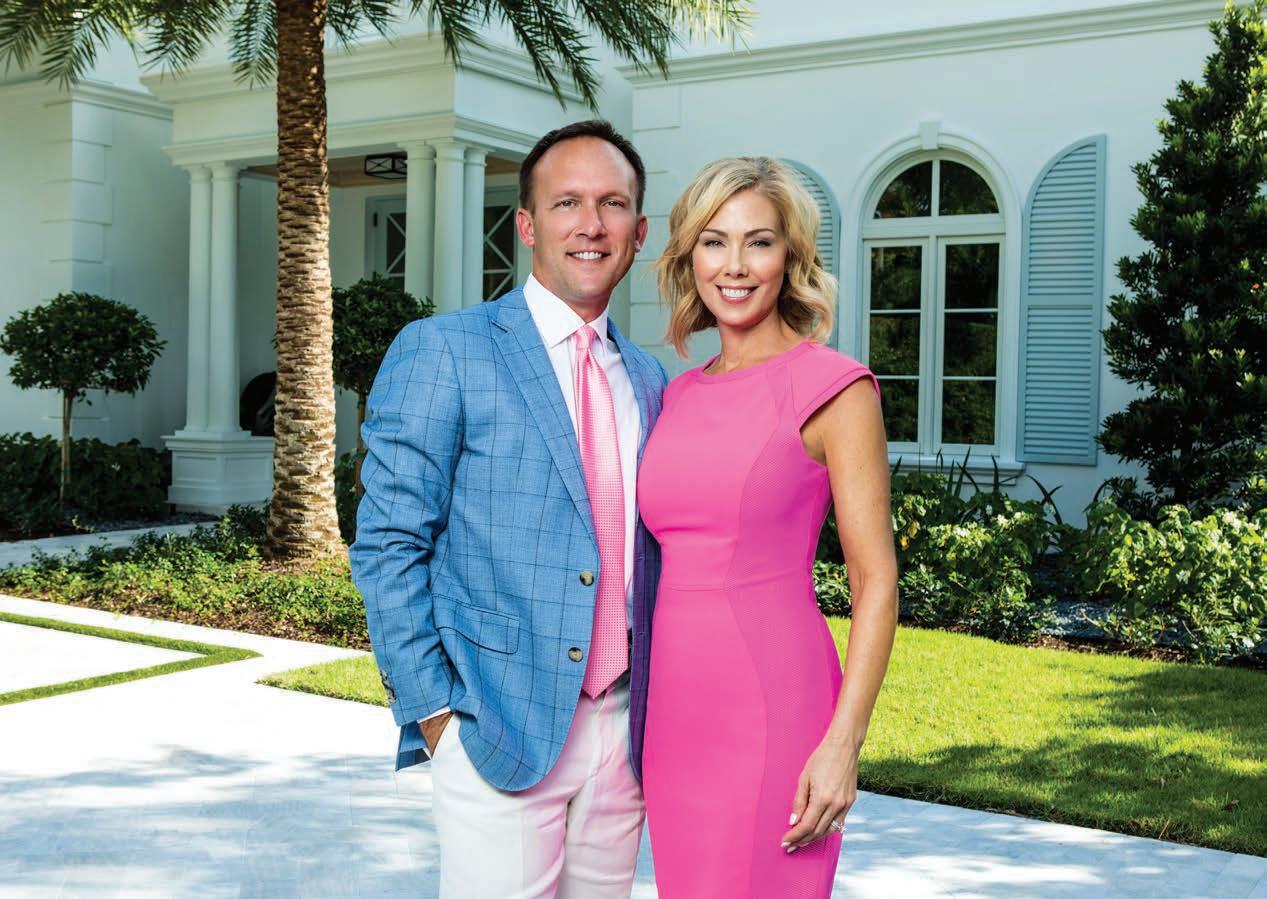
Proven leaders in the luxury real estate industry, The Bretzlaff Group is led by married business partners partners Craig and Heather Bretzlaff who specialize in luxury residential properties from Palm Beach to Jupiter Island, including exclusive golf and country club communities, waterfront estates, new construction, and |and development. With over $1 billion in career sales*, The Bretzlaff Group capitalizes on its unique qualifications to set them apart in today’s ever-changing market. Their knowledge spans over 50 years of combined experience in real estate.
Connect with The Bretlzaff Group today to learn more about what they are doing in our community or to start a conversation on how they can help you . . . turning what you love into where you live!
Craig A. Bretzlaff
Sales Associate
Executive Director of Luxury Sales
M 561.601.7557
craig.bretzlaff@elliman.com
thebretzlaffgroup.com
Heather Bretzlaff
Sales Associate
Executive Director of Luxury Sales
M 561.722.6136
heather.bretzlaff@elliman.com

400 SOUTH US HIGHWAY C1, JUPITER, FL 33477. 561.653.6100 © 2023 DOUGLAS ELLIMAN REAL ESTATE. ALL MATERIAL PRESENTED HEREIN IS INTENDED FOR INFORMATION PURPOSES ONLY. WHILE, THIS INFORMATION IS BELIEVED TO BE CORRECT, IT IS REPRESENTED SUBJECT TO ERRORS, OMISSIONS, CHANGES OR WITHDRAWAL WITHOUT NOTICE. ALL PROPERTY INFORMATION, INCLUDING, BUT NOT LIMITED TO SQUARE FOOTAGE, ROOM COUNT, NUMBER OF BEDROOMS AND THE SCHOOL DISTRICT IN PROPERTY LISTINGS SHOULD BE VERIFIED BY YOUR OWN ATTORNEY, ARCHITECT OR ZONING EXPERT. EQUAL HOUSING OPPORTUNITY. *PER DE INTERNAL RECORDS. **BY 2022 GROSS COMMISSION INCOME AT DOUGLAS ELLIMAN REAL ESTATE.
Bretzlaff Group at Douglas Elliman Real Estate #1 Team Douglas Elliman, Jupiter
Unmatched Expertise and Exceptional Results The

2 | PINNACLE | jupitermed.com CONTENTS 26 FROM DREAM TO REALITY Inside Jupiter Medical Center’s new Johnny and Terry Gray Surgical Institute By Heather Graulich 32 HOMEWARD BOUND Meet three physicians who were raised in Palm Beach County and are now practicing medicine at JMC By Sandra Gurvis Features 38 THE BEAT GOES ON How JMC’s Structural Heart Program is improving outcomes for those with heart abnormalities or defects By Nicole Neal 44 HEART OF THE MATTER The big benefits of minimally invasive cardiac surgery By Kelley Marcellus 50 GIVING FROM EXPERIENCE Bill and Sue Ryan are dedicated to supporting families in the throes of medical emergencies By Heather Graulich

– 26 Limited Collection Residences
– Oceanfront 3–4 Bedrooms Estate Residences
– Eligible to apply for a membership at Discovery Company’s nearby community Atlantic Fields BEAUTIFULLY CRAFTED WITH EXQUISITE FINISHES...
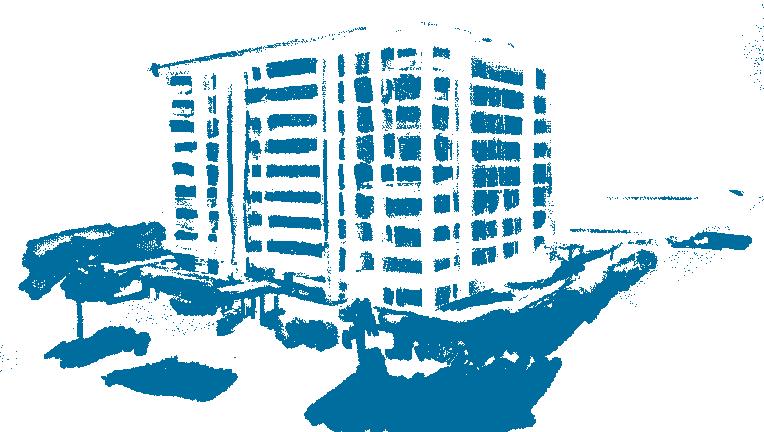
561.730.3245
Prospectus or
Purchase Agreement. The sketches, renderings, graphic materials, plans, specifications, terms, conditions and statements contained in this brochure are proposed only, and the Developer reserves the right to modify, revise or withdraw any or all of same in its sole discretion and without prior notice. All improvements, designs and construction are subject to first obtaining the appropriate federal, state and local permits and approvals for same. These drawings and depictions are conceptual only and are for the convenience of reference and including artists renderings. They should not be relied upon as representations, express or implied, of the final detail of the Condominium. The Developer expressly reserves the right to make modifications, revisions, and changes it deems desirable in its sole and absolute discretion. All depictions of appliances, counters, soffits, floor coverings and other matters of detail, including, without limitation, items of finish, decoration, and furniture, are conceptual only and are not necessarily included in each Unit. The photographs contained in this brochure may be stock photography or have been taken off-site and are used to depict the spirit of the lifestyles to be achieved rather than any that may exist or that may be proposed, and are merely intended as illustrations of the activities and concepts depicted therein. Consult your Purchase Agreement and the Prospectus for the items included with the Unit. Dimensions and square footage are approximate and may vary with actual construction. The project graphics, renderings and text provided herein are copyrighted works owned by the Developer. All rights reserved. Unauthorized reproduction, display or other dissemination of such materials is strictly prohibited and constitutes copyright infringement. All prices are subject to change at any time and without notice. Please check with the sales center for the most current pricing. 08/23 We are pledged to the letter and spirit of U.S. policy for the achievement of equal housing opportunity throughout the Nation. We encourage and support an affirmative advertising and marketing program in which there are no barriers to obtaining housing because of race, color, religion, sex, handicap, familial status, or national origin. All real estate advertised herein is subject to the US Federal Fair Housing Act of 1968 which makes it illegal to make or publish any advertisement that indicates any preference, limitation, or discrimination based on race, color, religion, sex, handicap, familial status, or national origin. Please check with your local government agency for more information.
300 S BEACH ROAD | JUPITER ISLAND BY APPOINTMENT ONLY
ORAL REPRESENTATIONS CANNOT BE RELIED UPON AS CORRECTLY STATING THE REPRESENTATIONS OF THE DEVELOPER. FOR CORRECT REPRESENTATIONS, MAKE REFERENCE TO THE DOCUMENTS REQUIRED BY SECTION 718.503, FLORIDA STATUTES, TO BE FURNISHED BY A DEVELOPER TO A BUYER. This is not intended to be an offer to sell, or solicitation to buy, condominium units to residents of any jurisdiction where prohibited by law, and your eligibility for purchase will depend upon your state of residency. This advertisement is not an offering. It is a solicitation of interest in the advertised property. No offering of the advertised units can be made and no deposits can be accepted, or reservations, binding or non-binding, can be made in New York until an offering plan is filed with the New York State Department of Law. This offering
only by the Prospectus for the
and no
should be
the
ATLANTIC BEACH IS A MODERN WORK OF ART
is made
Condominium
statement
relied upon if not made in
your


4 | PINNACLE | jupitermed.com CONTENTS 10 WELCOME Greetings from Jupiter Medical Center 13 PULSE Ask the Expert | Well-Being | Treatment 53 EVENT PHOTOS Snaps from recent fundraisers and socials hosted by Jupiter Medical Center Foundation 64 SLEEP LIKE A BABY JMC’s vice president and chief nursing officer offers key information on how and why to swaddle a newborn Departments 24 18 ON THE COVER DR. AMIT RASTOGI, PHOTO BY TRACEY BENSON

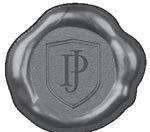
PROVIDENTJEWELRY.COM
WEST PALM NAPLES JUPITER FORT MYERS PALM BEACH WELLINGTON
1210 S. Old Dixie Highway Jupiter, Florida 33458
561.263.2234
jupitermed.com
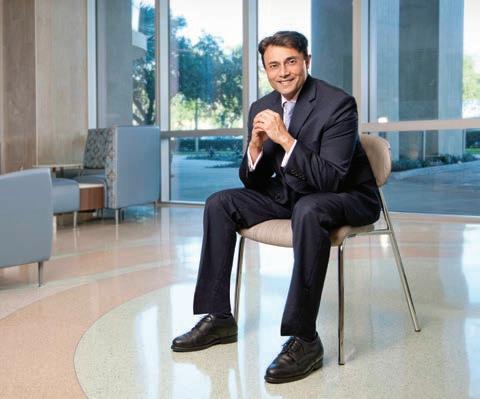
Amit Rastogi, MD, MHCM President and Chief Executive Officer, Jupiter Medical Center
Traci Simonsen Chief Philanthropy Officer, Jupiter Medical Center Foundation
JUPITER MEDICAL CENTER OFFICERS AND TRUSTEES 2023-2024
Martin A. Dytrych, CPA, Chairman
Robert J. Stilley, Vice Chairman
Jack Waterman, DO, Secretary
Rosanne M. Duane, Esq., Treasurer
Mark L. Corry, MD
Henri J. DesPlaines, CPA
Michele D. Deverich
Lee Fox, MD
Harvey Golub
Philippe Jeck, Esq.
Michael Leighton, MD
Peter A. Lund
Thomas Rowe, MD
John Seifert
Anthony P. Shaya, MD
JUPITER MEDICAL CENTER FOUNDATION, INC. TRUSTEES 2023-2024
Peter A. Lund, Chairman
Joseph Petri, Vice Chairman
Donald H. McCree, Jr., Secretary
Salvatore A. Tiano, Treasurer
Traci Simonsen, Chief Philanthropy Officer
Leonard Abramson
Edward L. Babington
Douglas S. Brown
George H. Damman
Neil S. Devlin
Martin A. Dytrych
Joan Jorgenson
Emeritus: Peter O. Crisp
William C. Mattison, Jr.
Jane F. Napier
James E. Perrella
Katharine F. Plum
M. Jude Reyes
Burton M. Tansky
Dennis K. Williams
6 | PINNACLE | jupitermed.com
BUILT BY THE COMMUNITY. FOR THE COMMUNITY.

Jupiter Medical Center is currently undergoing the most transformative period in our history – thanks to supporters like you. As the region’s only independent, not-for-profit health care system, we stand ready to meet the needs of the future, today. Learn more about how we are rapidly growing our depth and breadth of services, developing new strategic partnerships and expanding our geographic footprint – all while maintaining the highest level of quality care.
To learn more, or to find out how you can help, please visit jmcfoundation.org


WORLD-CLASS HEALTH CARE IN PALM BEACH COUNTY
Publisher Terry Duffy
Associate Publisher Dina Turner
Editorial Director Daphne Nikolopoulos
Editor Mary Murray
Creative Director Olga M. Gustine
Senior Art Director Jenny Fernandez-Prieto
Digital Imaging Specialist Leonor Alvarez Maza
CONTRIBUTING WRITERS
Judy Alexandra DiEdwardo, Karen Feldman, Heather Graulich, Sandra Gurvis, Kelley Marcellus, Nicole Neal, Valerie Staggs
CONTRIBUTING PHOTOGRAPHERS
Tracey Benson, Jerry Rabinowitz
ADVERTISING
National Sales Director Deidre Wade
Account Managers Kathy Breen, Jennifer Dardano, Tanya Lorigan, Meegan Wyatt
Advertising Services Coordinator Elizabeth Hackney
Marketing Manager Rebecca Desir
PRODUCTION
Production Director Selene M. Ceballo
Production Manager Lourdes Linares
Digital Pre-Press Specialist George Davis
Advertising Design Coordinators Anaely J. Perez Vargas, Jeffrey Rey
Production Coordinator Ileana Caban
Digital Marketing Manager Tyler Sansone
OPERATIONS
Chief Operating Officer Todd Schmidt
Accounting Specialist Mary Beth Cook
Accounts Receivable Specialist Ana Coronel
Distribution Manager Judy Heflin
Logistics Manager Omar Morales
Circulation Manager Marjorie Leiva
Circulation Assistants Cathy Hart, Britney Stinson
Circulation Promotions Manager David Supple
IT Manager Omar Greene
In Memoriam Ronald J. Woods (1935-2013) HOUR MEDIA, LLC
CEO Stefan Wanczyk
President John Balardo
8 | PINNACLE | jupitermed.com
PUBLISHERS OF: Palm Beach Illustrated • Naples Illustrated • Palm Beach Charity Register • Naples Charity Register Florida Design • Florida Design Naples • Florida Design Miami • Florida Design Sarasota • Florida Design Sourcebook Palm Beach Relocation Guide • Southwest Florida Relocation Guide • Fifth Avenue South • Palm Beach 100 • Naples 100 Art & Culture: Cultural Council for Palm Beach County • Pinnacle: Jupiter Medical Center Foundation Waypoints: Naples Yacht Club • Naples on the Gulf: Greater Naples Chamber • Jupiter • Stuart • Aventura Vero Beach Magazine • Community Report: Collier Community Foundation • Advances: Tampa General Hospital Naples Realtor: Naples Area Board of REALTORS • Annual Report: Woods Charitable Trust Published by Palm Beach Media Group North P.O. Box 3344, Palm Beach, FL 33480 Telephone: 561.659.0210 • Fax: 561.659.1736 www.palmbeachmedia.com Copyright 2024 Palm Beach Media Group North Inc. All rights reserved.




Elevate Your Everyday Discover an Unparalleled Waterfront Lifestyle Luxurious Two and Three Bedroom Residences From $1.6M - $4M+ Elevated dining with SeaHawk Prime by David Burke and The 19th Hole featuring Topgolf Swing Suite In The Palm Beaches alongside the Lake Park Harbor Marina, with slips for vessels up to 100 ft ORAL REPRESENTATIONS CANNOT BE RELIED UPON AS CORRECTLY STATING THE REPRESENTATIONS OF THE DEVELOPER, FOR CORRECT REPRESENTATIONS, REFERENCE SHOULD BE MADE TO THE DOCUMENTS REQUIRED BY SECTION 718.503, FLORIDA STATUTES, TO BE FURNISHED BY A DEVELOPER TO A BUYER OR LESSEE. THIS OFFERING IS MADE ONLY BY THE OFFERING DOCUMENTS FOR THE CONDOMINIUM AND NO STATEMENT SHOULD BE RELIED UPON IF NOT MADE IN THE OFFERING DOCUMENTS. THIS IS NOT AN OFFER TO SELL, OR SOLICITATION OF OFFERS TO BUY, THE CONDOMINIUM UNITS IN STATES WHERE SUCH OFFER OR SOLICITATION CANNOT BE MADE. PRICES, PLANS AND SPECIFICATIONS ARE SUBJECT TO CHANGE WITHOUT NOTICE. 85% SOLD | PREMIUM RESIDENCES AWAIT | NAUTILUS220.COM | 561.336.9272 COMPLETION EARLY 2025
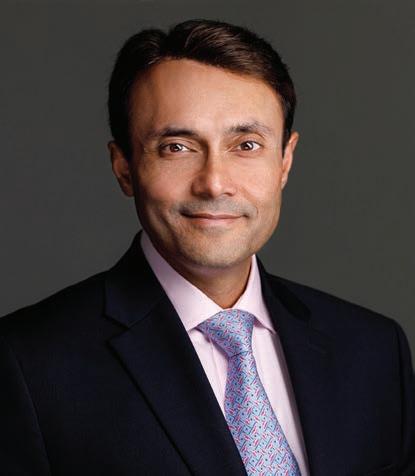
IN THIS ISSUE
Plenty of warm, fuzzy sayings exist about the importance of “home.” Author L. Frank Baum made “there’s no place like home” famous in The Wizard of Oz The poet T.S. Eliot once penned “home is where one starts from.” Author Maya Angelou noted that “the ache for home lives in all of us.”
Giving back to the community where they grew up is what lured three experienced physicians—cardiothoracic surgeon Dr. Vivek Patel, breast surgeon Dr. Julian Berrocal, and pulmonary/critical care specialist Dr. Kevin Green—back to Palm Beach County and to Jupiter Medical Center.
“Much of my family still lives here, and I had always hoped to return,” says Patel, who was born in New York and moved to Palm Beach Gardens as an infant with his family, led by his surgeon father. After studying medicine in Boston and India, and specializing in cardiothoracic surgery in Pennsylvania, New York, and Texas, he accepted “a great opportunity” to join the growing and world-class JMC cardiothoracic program in June 2023.
Berrocal’s return to JMC is a full-circle moment. As a senior at Jupiter Christian School, his interest in science and medicine led to the establishment of a still-active teen volunteer program at JMC, where he first met Dr. John Rimmer, now medical director of the Comprehensive Breast Care Program. After earning degrees in Miami, Wisconsin, and Yale, Berrocal held surgery positions in New York City and the University of Miami Breast Institute—but he always longed to return to his stomping grounds. He is now a breast surgeon oncologist at the Anderson Family Cancer Institute and an associate of Rimmer’s.
“JMC has expanded enormously,” Berrocal says with hometown pride. “The culture and environment are the same or even better than when I left.”
Green’s family moved to Palm Beach County when he was a teen, and after graduating from Palm Beach Central, he pursued medical studies in Florida and Barbados with a specialty in pulmonary and critical care medicine. He jumped at the chance to join the JMC staff when his wife, JMC head-and-neck surgeon Dr. Anastasiya Quimby, alerted him to a job opening with the hospital’s Sleep Center and Respiratory Services.
“It’s a great fit because so many of my cousins, uncles, and aunts are here,” says Green. “We have a young child, and my mom is still a nurse in West Palm Beach.”
Read more about the physicians’ journeys back to JMC in this issue of Pinnacle, which also highlights the impact and breadth of care at the newly opened Johnny and Terry Gray Surgical Institute. At this 90,000-square-foot, state-of-the-art facility, our team is now capable of treating more than 16,000 surgical patients each year. One surgeon’s description? “A gorgeous facility.”
Explore the range of services within the Structural Heart Program, which attracted Dr. Michael Sabbah, an interventional cardiologist from the Mayo Clinic. And learn how Patel—now that he’s back in his hometown—is leveraging his expertise in minimally invasive heart surgery to get patients with heart disease back on their feet quickly without the need for open-heart surgery.
Together, we are all so lucky to have such talented, dedicated medical professionals who provide expert care in the place we call “home.”
To your health and our community,
Amit Rastogi, MD, MHCM President and Chief Executive Officer Jupiter Medical Center
10 | PINNACLE | jupitermed.com
WELCOME
LILA PHOTO
We’re dedicated to making the simple solution for your complex divorce even BETTER.
• For over 20 years, the partners at Fisher Potter Hodas (FPH) have concentrated their practice on complex, high stakes divorce cases for corporate executives, closely held business owners, professional athletes, celebrities and wealthy families throughout the state of Florida.
• FPH has now expanded its practice by joining forces with Rottenstreich Farley and Bronstein based in New York City.
• And, on October 15, 2023, we opened our new, fully staffed Miami office.
• The new firm, RFB+Fisher Potter Hodas creates an interstate team of 30 seasoned matrimonial lawyers who (i) were educated at some of America’s finest law schools (including Harvard, Yale, Georgetown, N.Y.U., University of Florida and University of Pennsylvania) and (ii) honed their litigation skills at some of America’s finest law firms (including Cravath, Swaine & Moore; DLA Piper; Goodwin Procter; White & Case; Holland & Knight; and the U.S. Justice Department).
• RFB+FPH lawyers have tried to verdict multiple cases with hundreds of millions of dollars at stake and sensitive child related issues in dispute. Rottenstreich Farley Bronstein Fisher Potter Hodas, LLP
n n n
Offices in Miami, Palm Beach and Manhattan.
n n n
Visit our website to find out about our qualifications.





award-winning health care
At Jupiter Medical Center, we are expanding access to exceptional health care right where it’s needed most, close to home. From offering the latest technologies in state-ofthe-art surroundings to bringing together multi-specialty physician teams of the highest caliber, Jupiter Medical Center continues to be top-rated in quality, safety, and patient experience. We are proud to be recognized globally as a leader in health care and are committed to continuing to serve our community as the only independent not-for-profit hospital in the region.
Meet our award-winning physicians at jupitermed.com.
PULSE

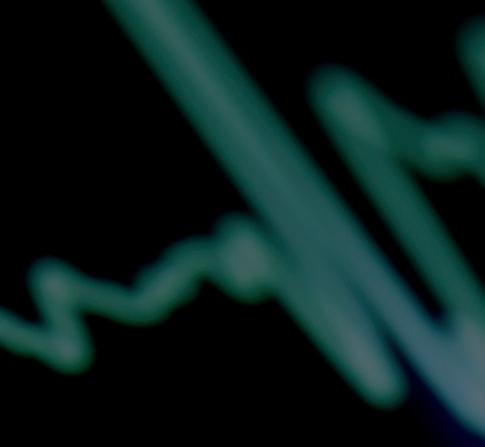
Ask the Expert
The skinny on a new class of popular weight loss drugs
GI cancer symptoms and treatments
Well-Being
What to know about asthma vs. allergies
Do saunas and cold plunges deliver bona-fide health benefits?

Treatment
HIPEC for ovarian cancer
The Bear Implant for ACL tears

jupitermed.com | PINNACLE | 13
PULSE ASK THE EXPERT
By Judy Alexandra DiEdwardo

Pound
for Pound
How GLP-1 agonists are improving weight loss outcomes
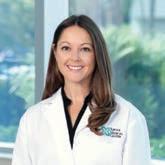
As the medical community’s understanding of obesity has expanded, so too have treatment options. Patients are no longer limited to strict behavior management protocols, and drugs once designed to help manage type 2 diabetes are now becoming the gold standard for delivering gains to those who struggle with obesity. Thanks to this specialty class of drugs, known as GLP-1 agonists, physicians like Jupiter Medical Center’s Dr. Carrie Salvia, who specializes in full-spectrum healing and disease prevention, are providing patients with renewed hope and more effective options. Salvia notes that these medications are not a quick fix for those who want to shed a few pounds; rather, they must be viewed as a tool to treat the chronic disease of obesity. Prospective patients should consult with a physician when considering if this class of drugs is right for them. Pinnacle recently caught up with Salvia to learn more.
What is this new class of weight loss drugs and how do they work?
GLP-1 agonists are a medication that act
on gut hormones that affect stomach emptying and the feeling of fullness, and that help the body use insulin more efficiently. These medications were first approved in 2005 to treat diabetes but were only recently FDA-approved for weight loss. Currently, only Saxenda, Wegovy, and Zepbound are approved for weight loss, although several other GLP-1 drugs are
being prescribed off-label. Before this recent evolution we didn’t have many effective options and were left to refer to bariatric surgery. It sounds like this is a real game changer. Would you agree?
Absolutely. We’ve seen the most success using these medications that have been around for many years. We began seeing that patients who were using these medications to treat their diabetes were also seeing weight loss. This prompted further studies to evaluate GLP-1s for weight loss treatment, which included patients without diabetes. The results have been impressive.
Why is Ozempic leading the way in popularity?
Its notoriety is largely because of various social media platforms and the media showcasing celebrities who are losing weight with the drug and who can pay out of pocket. Despite FDA-labeled use, many insurance companies and federal health programs are not providing coverage for these drugs for weight loss, which can cost $1,000 or more per month. And so, you also have a small population of people who want something to help with their weight loss and who can pay out of pocket for Ozempic (off-label) or other GLP-1s. Which patient population are these drugs best suited for?
Patients with a BMI of 30 or higher or a BMI

14 | PINNACLE | jupitermed.com

of at least 27 with comorbidities like high blood pressure, high cholesterol, diabetes, and fatty liver disease.
What kind of success are you seeing in this patient population?
I would say the majority of patients coming in seeking weight loss medication are fed up with their efforts and have demonstrated at least a willingness to change their lifestyle. Getting this added support from these drugs really gives them a chance to finally see some results. I’ve seen some people who start taking the medication, lose up to 40 to 50 pounds, and find themselves in a new way of living that they can realistically maintain with the help of the medication.
How do you address the psychological aspect of overeating? Are these drugs given in conjunction with behavioral management or counseling?
Yes. We give counseling about diet and exercise, and some patients are referred to a nutritionist. These drugs are meant to be used in conjunction with behavioral lifestyle changes, reduced-calorie meal plans, and increased physical activity.
What are the biggest benefits and risks?

The weight loss benefits are impressive. I have seen patients come off their blood pressure medications, drop their cholesterol significantly, and get their diabetes under excellent control. They’re happier, healthier, sleeping better, and motivated to maintain their new way of life. Some people can’t tolerate these medications because they do come with side effects: nausea, vomiting, constipation, and general GI upset. There can be severe side effects from the
medication that are less common but important to discuss with a physician prior to use.
Could GLP-1 agonists be the missing link to kickstarting new behavior and long-term success for patients who have previously struggled with weight loss and weight loss maintenance?
Yes, I would say even anecdotally, I have seen the most success with these drugs than any others currently on the market. These drugs can meet a person who’s suffering from obesity where they’re at and help them get to where they need to go. It’s not magic. It’s really treating their physiology in a smart way. I have patients who, once they’ve been on these medications and lose the weight, have energy to go to the gym, do the things they love, and make the necessary lifestyle and behavioral changes. «
For more information, please call 561.741.5566
jupitermed.com | PINNACLE | 15
PULSE ASK THE EXPERT
By Karen Feldman

Gut Check
A JMC oncologist explains what’s new in the world of GI cancers

Dr. Jon Du Bois treats cancers that occur along the 25-foot passageway leading from the esophagus to the anus. But the board-certified oncologist and hematologist and the rest of the team at Jupiter Medical Center’s Anderson Family Cancer Institute do more than treat gastrointestinal (GI), neuroendocrine, and cutaneous (skin) cancers.
“In the old days, patients may have been referred to medical oncologists only after being diagnosed with a cancer,” Du Bois says. “But now, we often see patients to aid in the diagnosis as well as to help with managing prevention, screening,
and genetic counseling. We help to navigate them from the earliest time of diagnosis to the extent of surveillance and survivorship. We now provide personalized medicine and targeted treatments.” Here, Du Bois (who came to JMC after serving as medical director of Massachusetts General Hospital Cancer Center at Emerson-Bethke; chief of the Division of Hematology and Oncology at Emerson Hospital; and a clinical associate in medicine for the Department of Medicine, Division of HematologyOncology at Massachusetts General Hospital, Harvard Medical School) shares insight into GI cancers, including common symptoms, preventive measures, and treatment advances.
What is the most common gastrointestinal cancer?
Colorectal is the most common and treatable, if detected early. It’s more common in men than in women and among individuals of African American descent. In the United States
in 2023, estimated new cases totaled 153,020, while estimated deaths were 52,550, second only behind lung and bronchial cancers. Are there ways to reduce one’s risk of getting colorectal and other GI cancers?
Yes. Heredity can play a role, but getting regular exercise and eating a low-fat diet full of fruits and vegetables and low on red meat and alcohol can reduce the risk of gastrointestinal cancer. We counsel to limit saturated fats, maintain adequate vitamin D levels, and consider incorporating tree nuts, such as walnuts, almonds, and cashews, into the diet.
What symptoms should people be aware of that might signal a GI cancer?
It’s always hard because we all get stomachaches and sometimes our bowel habits change. But if something persists beyond the usual, call your physician. Symptoms include blood in the stool, change in caliber of the stool, or abdominal swelling. If any of these occur, it is prudent to seek medical attention.
16 | PINNACLE | jupitermed.com
It seems as if the incidence of colorectal cancer is increasing among younger people. Is that the case or are we just hearing about it more often?
The prevalence of it is increasing in patients under the age of 55—in part due to a decrease in those over 65—but we don’t fully understand this trend. What’s also changing is public awareness. Cancer is on TV and the internet now, whereas you saw zero about it years ago. There are screening campaigns and smokingcessation ads, so it really has been that all ages are able to be aware of it. It’s more an issue of awareness and public openness to discuss cancer.
Without awareness, if I told someone to get a colonoscopy, it might take a couple of years for them to get there. But that awareness starts earlier now, so they may get the test earlier. For such a great benefit, a colonoscopy is a relatively well-tolerated and extremely worthwhile screening tool. Cologuard (an at-home molec-

ular screening test) in the general population is not a replacement for a colonoscopy, but it can be worthwhile for patients who have a contraindication for a colonoscopy. Is progress being made in treating GI cancers?

There have been significant advances over the years. These include new molecular therapies, targeted therapies, and immunotherapies that complement the role of chemotherapy. There have been huge advances in radiation oncology, with the ability to be more focused in applying stereotactic radiotherapy (a very focused delivery of radiation). We’ve also made surgical advances with robotic and minimally invasive techniques that have come into the realm of cancer surgeries.





Have these advances improved outcomes?
Yes, cancer-specific mortality is going down and we have more and more cancer survivors living meaningful lives. This is in part due to the better treatments and will continue to depend on better prevention, screening, and surveillance. « For more information, please call 561.263.4400
SandyJames Fine Food and Productions is South Florida’s premier full service Event Production & Catering company. Centrally located in West Palm Beach, we handle a vast variety of events across South Florida.
Upcoming fundraiser dinner for 400 guests? SandyJames can get the tent while offering entree suggestions. Looking for your next corporate team building venue? We’re located at The National Croquet Center and can set the bar while your group immerses themselves in the world of croquet.
Nothing is too big or small for SandyJames Fine Food and Productions.
Let us know about your event today!
jupitermed.com | PINNACLE | 17
Experience
Culinary Design INFO@SANDYJAMES.NET TEL. (561) 366-0012 WWW.SANDYJAMES.NET Eating a low-fat, high-fiber diet can help to reduce one’s risk of colorectal cancer.
Innovative
PULSE WELL-BEING
By Karen Feldman

Asthma vs. Allergies
What to know and how to act when experiencing asthma or allergic asthma

While asthma and allergies are two distinct afflictions, they are common comorbidities. The National Institutes of Health (NIH) classifies asthma as a chronic condition that affects the airways in the lungs, causing them to become inflamed and narrowed at times and, therefore, making it more difficult to breathe. Those with allergic diseases have an overactive immune system that causes their bodies to react to certain allergens; these reactions vary but can include difficulty breathing, hives, itchy throat, or, in severe cases, anaphylaxis.
In the United States, more than 27 million people—1 in 12—have asthma, according to the Asthma and Allergy Foundation of America (AAFA). Many people suffer from allergic asthma, meaning the condition is triggered by inhaling an allergen. Allergic asthma is the
most common type of asthma, notes the AAFA, and it peaks in early childhood and steadily decreases during adulthood.
Determining what type of asthma you have is important when establishing a treatment plan. That’s where physicians like Dr. Kevin Green come in. Green, who is board-certified in pulmonary disease and specializes in critical care medicine and interventional pulmonology, oversees pulmonary care at Jupiter Medical Center’s Thoracic Surgery & Lung Center of Excellence, and practices with the Jupiter Medical Center Physician Group. On an initial visit, patients describe their symptoms and complete a thorough medical history, Green says. Then they work to pinpoint triggers, such as mold, pollen, seasonal weather changes, or contact with pets, for example.
18 | PINNACLE | jupitermed.com

“When it comes to determining specific allergies, allergists can provide extensive skin testing,” Green says. Allergists also rely on blood testing, which can measure levels of eosinophils (specialized cells of the immune system) and an antibody called immunoglobulin E (or IgE); a high level of IgE would indicate an allergy. An allergist’s tests can be region-specific as well, targeting tree pollens and other substances found in the area in which a patient lives.
To determine if a patient has asthma, he or she will undergo a methacholine challenge test to evaluate how “reactive” or “responsive” the lungs are. If the results are weaker (the breath is less forceful), the airways are considered “twitchy,” and treatment is required.
Keeping airways smooth and nonreactive is the key, and treatment has come a long way from simply handing patients rescue inhalers of albuterol for when symptoms occur. Green says patients typically start with a medium dose of daily inhaled corticosteroids, increasing to a higher dose if needed. They receive the rescue inhaler as well, but corticosteroids generally control asthma better, Green explains. (Anyone who uses their rescue inhaler more than a few times per week, should seek additional treatment, he adds.)
If a patient is diagnosed with allergic asthma, then he or she must also treat the allergies in conjunction with the asthma. The
most common medication for allergies is an antihistamine, which blocks the chemicals released during an allergic reaction. These can be taken as needed, but it is often best practice for patients to take them daily during peak allergy season.
And regardless of whether you have allergic asthma or not, Green notes that a lot of asthma is due to environmental stimuli. Florida isn’t the worst place to live for sufferers of asthma, but the state boasts plenty of triggers. While air pollution is mostly low, irritants such as pollens, dust mites, and molds thrive in the subtropical climate. Red tide, found periodically in area waters, can also be a trigger. So can any kind of smoking, including vaping.
For those with severe, persistent asthma,
Left: Methacholine challenge tests are used to diagnose asthma. Below: One promising treatment for persistent asthma are injectable biologics.

Green points to biologics therapy as a leading treatment. These injectable medications, he notes, are “shown to severely reduce asthma and, in some cases, increase lung function.”
Biologics are administered by injection every four to eight weeks and results can be dramatic, Green adds. A heavily advertised one is Tezspire. However, women who are pregnant or planning to become pregnant should not use biologics, Green notes, because there isn’t a lot of safety data available yet.
One tool everyone with asthma should have is an action plan: a personalized approach that a patient develops in coordination with his or her medical team. Armed with a peak flow meter—a handheld device that measures how well air moves out of the lungs—patients can monitor how well they are breathing. When the measurement drops to a certain level, it’s time to seek additional help.

Having an effective plan and adhering to it “allows you to mitigate symptoms at home instead of waiting and getting hospitalized,” Green says.
And that leaves everyone breathing easier. «
For more information, please call 561.745.6950
jupitermed.com | PINNACLE | 19
PULSE WELL-BEING
By Valerie Staggs

Running Hot and Cold
Do saunas and cold plunges live up to their viral hype?
of coronary heart disease; their risk of mortality from any cause was 40 percent lower than the men who were not frequent sauna users.

Dr. Peter Lyn
For centuries, people have been experimenting with the use of hot and cold to cure ailments and live a longer, healthier life. As far back as 2500 BC, the Egyptians employed cold therapies to treat injuries and inflammation. More than 3,000 years ago, the ancient Mayans built sweathouses (the first known saunas) to cleanse their bodies. Today, sauna use is as popular as ever and cold-water dips are catching up: thousands of people have shared videos of themselves taking a cold plunge on TikTok, with #coldplunge clocking more than 2 billion views on the social media app.
With all the hype about hot and cold thera-
pies, how do you know if it’s worth sweating it out in a sauna or taking a dive into icy waters? The answer is not straightforward. While a lot of researchers have sought to draw a definitive correlation between hot and cold therapies and living a healthier and longer life, the science continues to be limited. Here, we provide an introduction with help from Dr. Peter Lyn, a primary care concierge physician at Jupiter Medical Center.
Saunas
Some research indicates that regular sauna use may be the key to living a longer life. A well-known study from Finland tracked 2,300 middle-aged men for 20 years and tied sauna use to a reduced risk of cardiovascular disease and a longer lifespan. The study concluded that the men who reported using a sauna four to seven times a week had a significantly lower risk
While the study’s findings are encouraging, researchers emphasize that Finnish culture is a unique case study for saunas. Sauna use is deeply embedded in the lives of Finns, and saunas are easily accessible across the country. Finnish saunas are also unique in their construction and are heated by a stove topped with stones, which generates a very hot, dry heat. Similar health benefits cannot be expected from other heat therapies, such as hot tubs or steam baths, and may differ with the use of other types of saunas.
“There are studies that show that being in a sauna is equivalent to a workout,” says Lyn, who advises his patients to get 150 minutes of moderate exercise per week. He explains that sauna use gets your heart going in the same way that a workout does but without the associated physical strain. Some evidence suggests that sauna usage may improve cardiovascular function, reduce inflammation, and lower cholesterol, all of which translates to a healthier heart for life.
20 | PINNACLE | jupitermed.com
If you’re going to start a new sauna regime, Lyn o ers some guidance. “Aim for one hour a week over three to four days and start at a lower temperature. If you have any chronic conditions or a heart diagnosis, discuss your plan with your physician before you begin.”
Cold Plunge Pools
Like sauna use, the practice of cold plunge pools or cold-water immersion (CWI) has been associated with health and longevity benefits, according to some researchers.
Professional athletes have long used CWI— which involves immersing oneself in cold water temperatures, typically below 60 degrees Fahrenheit—to aid in recovery. Tennis player Naomi Osaka and Olympic runner Usain Bolt are just two of the many athletes who credit CWI with helping to ease muscle soreness and reduce inflammation after a strenuous workout.
While reducing inflammation in the body alone does not lead to a longer life, CWI stimulates several metabolic e ects that, along with reduced inflammation, do support lon-
gevity. One of those e ects is the conversion of white fat to brown fat. “Studies show more active brown fat in people exposed to cold,” Lyn says.
Lyn goes on to explain that brown fat increases one’s metabolic rate, which improves the body’s ability to break down blood sugar and fat molecules. Brown fat helps control weight gain and supports healthy insulin levels, a benefit for people su ering from diabetes. It has also been linked to improved immune function. “Studies are promising and show benefits, but more studies are needed,” he notes.
Before you take the plunge into an icy bath, Lyn urges cautions. “Start slow. Aim for 11 minutes per week over two to three sessions. My best advice is to aim for a temperature cold enough that you don’t really want to get in, but not so cold that you can’t stay in for two to three minutes. And, if you have unstable cardio issues, I wouldn’t do it without your doctor’s approval.” «
For more information, please call 561.741.5672





One alleged benefit of cold-water immersion is muscle recovery, making the practice popular among athletes.




F or more than 40 years Dr. Henry Shapiro has offered the latest up to date care for his hematology and oncology patients. He takes pride in his compassionate and comprehensive care, making himself always available to his patients in both the office and hospital. Over the years, he has maintained a close relationship with Jupiter Medical Center, having been instrumental in the development of its cancer center in the early 1980’s, becoming its first director of oncology. As a senior member of Jupiter Hospitals staff, he works closely with the oncology floor nurses and a group of highly trained physicians in several different specialties. Utilizing cutting edge

targeted therapy and immunotherapy, he incorporates genomic testing to determine individualized therapy.
Dr. Shapiro has recently moved his office to 1680 South Central Boulevard, Suite 112 in Jupiter offering both laboratory and infusional services. Caitlyn Harrelson, physician’s assistant newly graduated from High Point University in North Carolina is a great addition to his practice, bringing expertise with more patient communication and availability. Both Dr. Shapiro and Caitlyn are truly dedicated to the well being of their patients. The
jupitermed.com | PINNACLE | 21
J. SHAPIRO, MDCAITLYN M. HARRELSON, PA 1680 SOUTH CENTRAL BOULEVARD, SUITE 112 • 561-748-2488
highest quality of medical care to our patients in a caring and compassionate setting HENRY
PULSE TREATMENT
By Nicole Neal

Cutting-Edge Chemo
HIPEC is now a viable option for many women diagnosed with ovarian cancer
Hyperthermic intraperitoneal chemotherapy (HIPEC) for ovarian cancer is now available at Jupiter Medical Center, the only health care institution in the region to offer the promising new treatment.
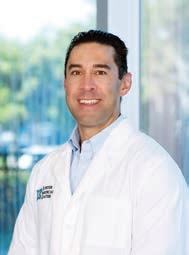 Dr. Michael Worley Jr.
Dr. Michael Worley Jr.
“Now patients diagnosed with ovarian cancer don’t have to leave Palm Beach County for innovative patient care,” says gynecologic oncologist Dr. Michael Worley Jr., who is spearheading the establishment of the HIPEC program for ovarian cancer at JMC’s Anderson Family Cancer Institute.
Worley—who arrived at JMC in August from Brigham and Women’s Hospital/Dana Farber
Cancer Institute in Boston, where he established the first HIPEC program for ovarian cancer in 2018—calls the procedure an “optimistic option” for certain patients. “This is an exciting area, with good quality data available on it,” he adds.
The two-step HIPEC procedure involves first surgically removing visible tumors, a process known as cytoreductive surgery. Then, while the patient is still anesthetized, heated chemotherapy is delivered directly into the abdomen to treat cancer cells that are not visible to the naked eye but that have spread to the lining of the abdominal cavity, an area considered difficult to treat with traditional chemotherapy.
HIPEC has been used to treat other abdominal cancers, including mesothelioma and pancreatic, colon, and rectal cancers, but its efficacy in treating ovarian cancer was not clear until the outcome of a breakthrough trial. The results, published in The New England Journal
of Medicine in 2018, showed that ovarian cancer patients who received surgery with HIPEC lived longer and were less likely to experience a recurrence of the disease or to die. Since that report, there have been even more highquality studies showing favorable outcomes, Worley explains.
“We now have a far better idea of who is going to benefit from HIPEC,” he adds. Those patients include women with recurrent ovarian cancer and those newly diagnosed with Stage 3 cancer. Importantly, patients with Stage 3 cancer represent the majority of newly diagnosed women. “Questions of who can tolerate it are a moot point now, too. We know it is a well-tolerated option for patients and it does not increase side effects or complications.”
Worley stresses that a diagnosis of ovarian cancer is no longer the grim sentence it once was. “Years ago, you thought about poor survivability. But the extent and quality of surgery and the number and quality of therapeutic options, not just HIPEC, is greater than it was 10 years ago.”
Indeed, the U.S. Food and Drug Administration (FDA) has approved more ovarian cancer therapies since 2014 than in the 60 years prior combined, according to a 2022 report by the Ovarian Cancer Research Alliance (OCRA). An arsenal of new drugs and treatments has brought deaths down 2.3 percent per year, OCRA reports.
“There has been an explosion of therapeutic options,” says Worley. “We’re seeing long-term survival rates of 5, 10, 20 years. If someone walked in and said they were 20 years out, I wouldn’t look at them in disbelief.”
His message to women who receive the frightening diagnosis: “You have every reason to be optimistic and hopeful. You should be eager to reach out to your gynecologic oncologist to discuss your treatment journey.” «
For more information, please call 561.263.4400
22 | PINNACLE | jupitermed.com
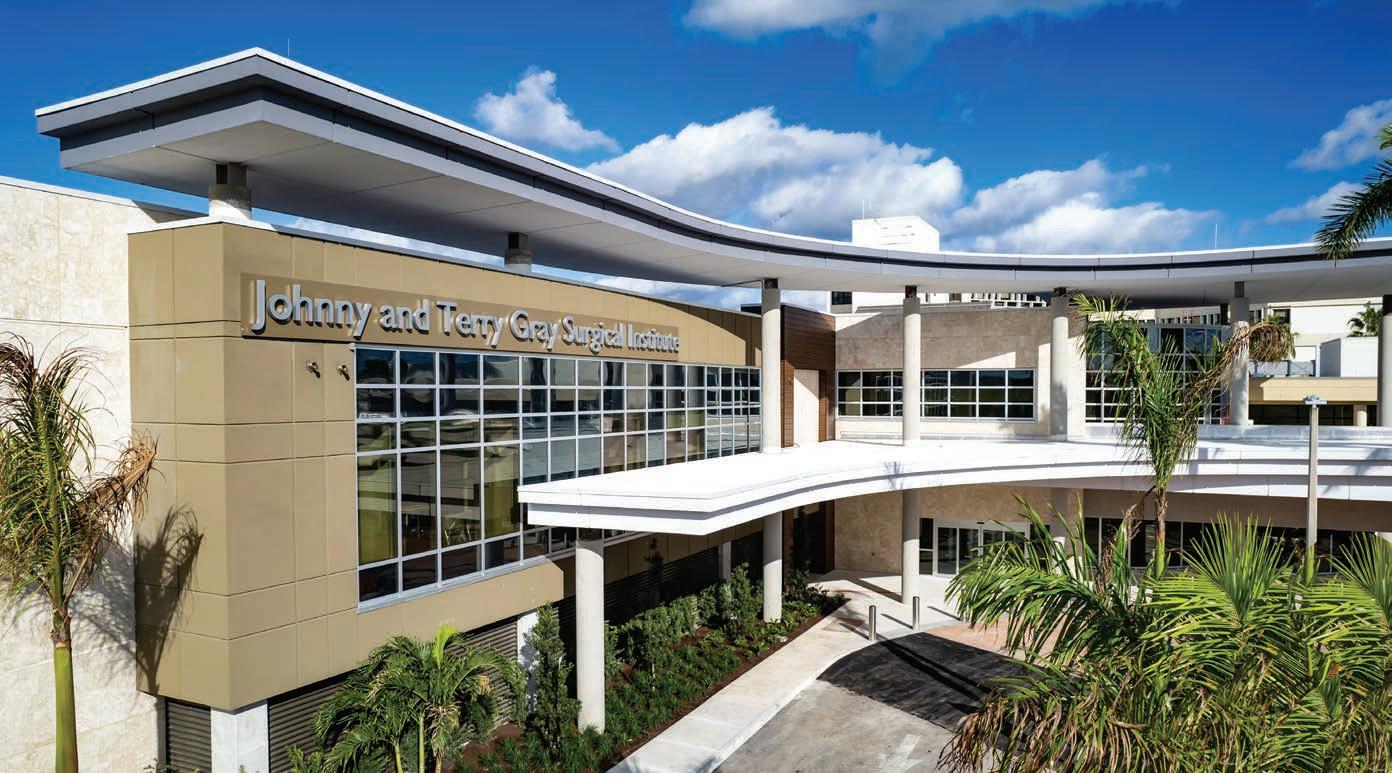
Reimagine the Future of health care
Innovative Care for Generations to Come
Leading the way in health care innovation, we proudly introduce our $100 million Johnny and Terry Gray Surgical Institute. The state-of-the-art surgical suites combine proven surgical methods with advanced, image-guided interventional technology to create “operating rooms of the future.”
World-class physicians, patients and loved ones will benefit from an enhanced surgical experience with attention to every detail.

561-263-2234 | jupitermed.com
Learn more
PULSE TREATMENT
By Sandra Gurvis

Handle with “Bear”
An innovative new implant represents a paradigm shift in the treatment of ACL tears
In late 2022, Dr. Matthew Stiebel, an orthopedic surgeon at Jupiter Medical Center’s Anderson Family Orthopedic & Spine Center of Excellence, performed the first Bear Implant in Palm Beach County, restoring the torn anterior cruciate ligament (ACL) in a 16-year-old high school soccer player.
While ACL injuries are common (in the United States alone, there are some 400,000 annually), the treatment for this one had some major differences. In this minimally invasive procedure, the Bear Implant acted as a bridge between the torn ends of the ACL. Stiebel injected a small amount of the patient’s blood into the implant—which is made of collagen and was reabsorbed by the body within about two months—thereby enabling the body to fuse the torn ends of the ACL back together. “Along with maintaining the knee’s natural
anatomy, recovery time was so much quicker,” says Stiebel, who specializes in sports medicine and shoulder and knee injuries at JMC.
Normally, ACLs are replaced with either another tendon from the patient’s body or from a deceased donor. Some procedures may require two separate incisions, with no guarantee that patients will be able to return to their previous level of activity.
Unlike a tendon, “the Bear Implant provides a medium/ collagen structure that allows the ACL to repair itself,” Stiebel notes. As a result, the knee feels more “normal" in terms of anatomy, sensation, and function. “Evidence is still being collected, but there may also be less chance of
hurting your opposite [unaffected] knee, which can have a rupture rate as high as 30 percent” in ACL reconstruction patients.
Because the Bear Implant can only be used on patients who still have a robust portion of their original ACL, so far, most viable candidates are younger. While the high school soccer player did well for eight months post-op, she did re-rupture her knee after returning to the sport and had to have revision surgery using a traditional bone-tendon-bone (BTB) autograft. Although she is now back to normal, her story illustrates the “importance of long-term follow-up on any new technique,” Stiebel adds.
Ideally, such injuries should be prevented in the first place. (In fact, athletic organizations such as the Fédération Internationale de Football Association [FIFA], which governs soccer worldwide, are adopting newer exercise programs that prioritize prevention.) With this in mind, extremely active athletes “such as high-demand female soccer players should probably get standard ACL reconstruction,” Stiebel says.
However, plenty more individuals can be helped with the Bear Implant, Stiebel concludes. “Presently, I use Bear on younger patients not involved in high school or college sports and have had excellent success.” «
For more information, please call 561.845.6000

24 | PINNACLE | jupitermed.com

Imagine how it would feel to have your personal physician accessible 24 hours a day. Appointments that suit your schedule, and a personalized care plan that is optimized for your individual health and wellness goals. Concierge Medicine by Jupiter Medical Center offers you exclusive access to expert clinicians dedicated to care tailored just for you. Join Jupiter Medical Center’s Concierge Care and feel the difference.
To learn more about concierge care call 561-741-5672. jupiterconciergemd.com
Concierge Medicine HEALTH CARE CUSTOM MADE FOR YOU

TO REALITY From Dream J
The Johnny and Terry Gray Surgical Institute is the start of a new chapter in superior care, surgical excellence, and patient experience
By Heather Graulich
upiter Medical Center’s new $90 million Johnny and Terry Gray Surgical Institute is now open, providing premier surgical care to the ever-expanding number of residents of Palm Beach County and the surrounding regions.
Founded in 1979 as a 34-bed hospital treating just 1,800 patients a year, JMC now cares for nearly 400,000 patients annually, including more than 16,000 surgical patients. The dream of constructing a worldclass surgical center took three years of painstaking discussions, planning, design, and fundraising to become reality.
“We knew we were going to approach capacity on the trajectory we were on,” says Steven Seeley, JMC’s senior vice president and COO. “We did a whole market
analysis and projected what the surgeries would be over the years and [decided that] we needed to get going on this now. We got our operating rooms team, our staff leadership, and a lot of surgeons involved. We got their fingerprints on it and figured out how to make it work.”
It was no small feat. The first challenge was identifying where on the hospital’s campus could accommodate 90,000 square feet, including 16 smart operating rooms and two hybrid operating suites for complex surgeries, plus numerous pre- and post-operative spaces, storage, and more. Fairly quickly, JMC leadership determined that an entirely new building was needed. This would allow for the region’s most cutting-edge operating rooms, both in terms of design and

26 | PINNACLE | jupitermed.com
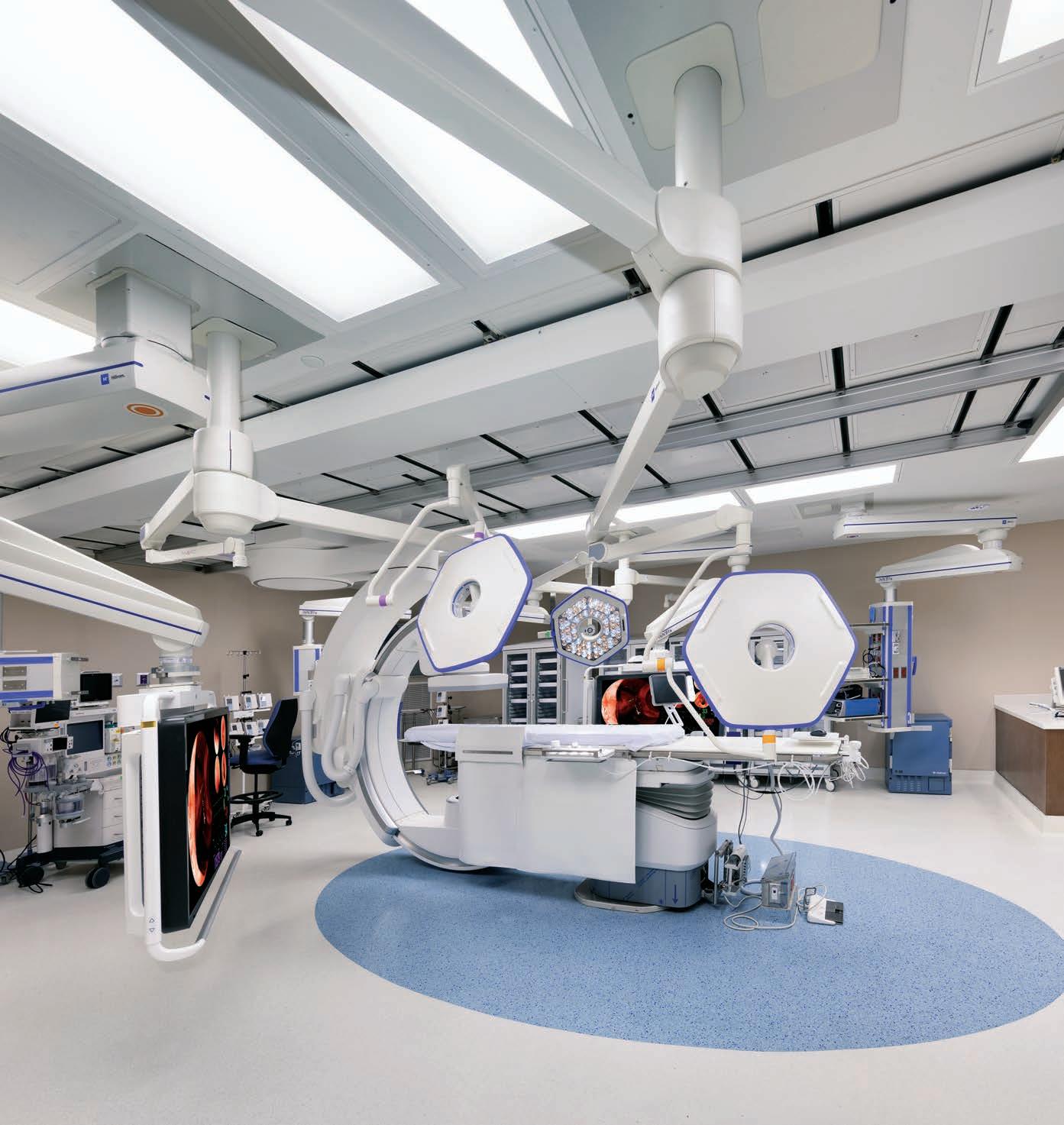
jupitermed.com | PINNACLE | 27
The new Surgical Institute includes two state-of-the-art hybrid operating suites.
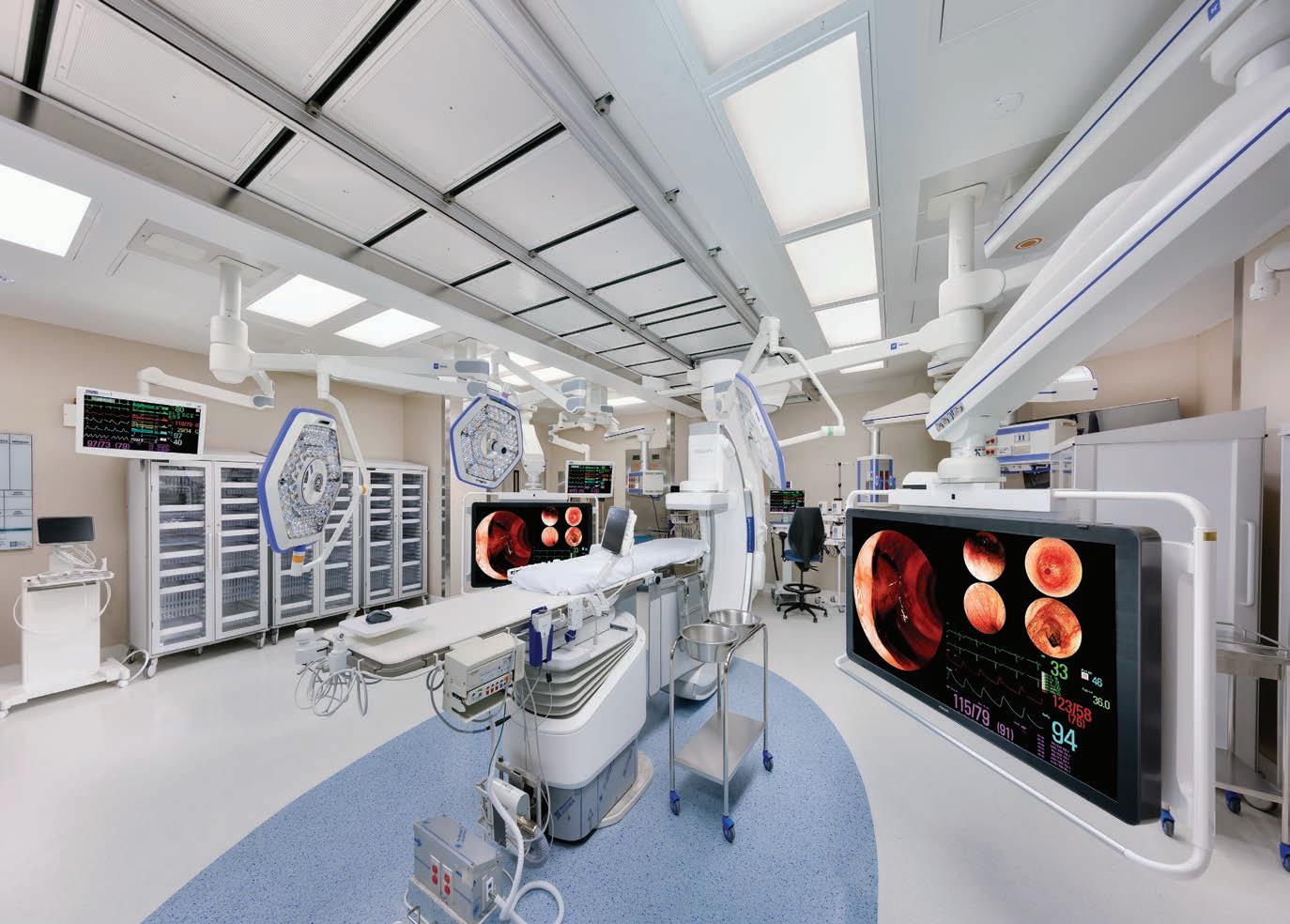
—Dr. Arthur Katz “
We’re basically like our own little city, our own micro-environment that’s very self-sufficient.”
features. An area on the hospital’s south side was mapped out for the footprint of the two-story building.
“We are focused on growing the depth and breadth of our services, all while continuing a strong focus on what sets us apart—our quality, safety, and patient experience,” says Dr. Amit Rastogi, JMC’s president and CEO. “We are thrilled to celebrate this milestone with our community.”
Physicians who will be spending much of their time within the Surgical Institute say they, too, are delighted with the final product.
“Obviously, it’s a gorgeous new facility, but what it boils down to is how state-of-the-art equipment and technology translate first and foremost to patient safety and quality of care,” says Dr. Arthur Katz, JMC’s medical director of cardiac surgery.
Katz, who leads the hospital’s open-heart surgery program and is regarded as a national leader in “off-pump” coronary artery bypass grafting (CABG) to treat coronary artery disease, notes the significance of seemingly small details in surgical spaces that greatly enhance both the efficiency and quality of procedures. He uses cardiac surgery as an example of how the new ORs benefit physicians and patients alike. There’s now a dedicated zone for the perfusionist, the medical professional who runs the heart-lung machine, which is how the heart is stopped so the surgeon can work on heart valves. Larger elevators connecting the Surgical Institute to the catheterization labs downstairs provide ample space to transport patients and their heart-assistive devices or ventilators on the way to surgery. Each OR also has its own blood bank, saving even more time.
“All these factors combine to allow for a safer environment,” says Katz. “And because of the efficient monitoring, updated software, and ability to communicate between rooms, surgeons can speak to one another in emergencies. We’re basically like our own little city, our own micro-environment that’s very self-sufficient.”
The two 1,100-square-foot hybrid operating rooms bring together surgeons, anesthesiologists, radiologists, and other specialists to
28 | PINNACLE | jupitermed.com


tackle complex medical issues with minimally invasive procedures, in turn, reducing risks, delays, and costs, all while improving patient safety. Patients typically experience a shorter recovery time following a procedure in a hybrid OR due to less stress from multiple surgeries. In a hybrid OR, surgeons can perform complex cardiovascular, neurological, thoracic, and orthopedic surgeries, with the number of these procedures growing rapidly.
These hybrid ORs are especially critical as they enable JMC to offer more complex structural heart interventions, including transcatheter aortic valve replacement (TAVR) and transcatheter mitral valve replacement (TMVR). As medical innovations reach hospitals, these hybrid ORs will accommodate the most intricate new procedures and surgeries.
The hybrid rooms’ Philips Azurion FlexArm imaging system supports high-quality, interventional imaging for both open and minimally invasive surgeries. Using its ceiling-mounted flexible and retractable arm, surgeons can convert from minimally invasive procedures to
open procedures while allowing for ease of movement and receiving input from the finest quality imaging. “It’s like comparing old brick cell phones to the iPhone 15,” Katz says of this technology.
The Surgical Institute also has two other cardiovascular operating rooms (CVORs) and four robotic operating rooms featuring the Velys system and Mako SmartRobotics technology to assist in joint replacement surgeries. These robotic systems help surgeons gain detailed imagery of patients’ unique joint anatomies and initiate precise, customized treatment.

jupitermed.com | PINNACLE | 29
From above: Dr. Amit Rastogi; Dr. Arthur Katz; the institute’s new robotic operating rooms include the da Vinci Surgical System.
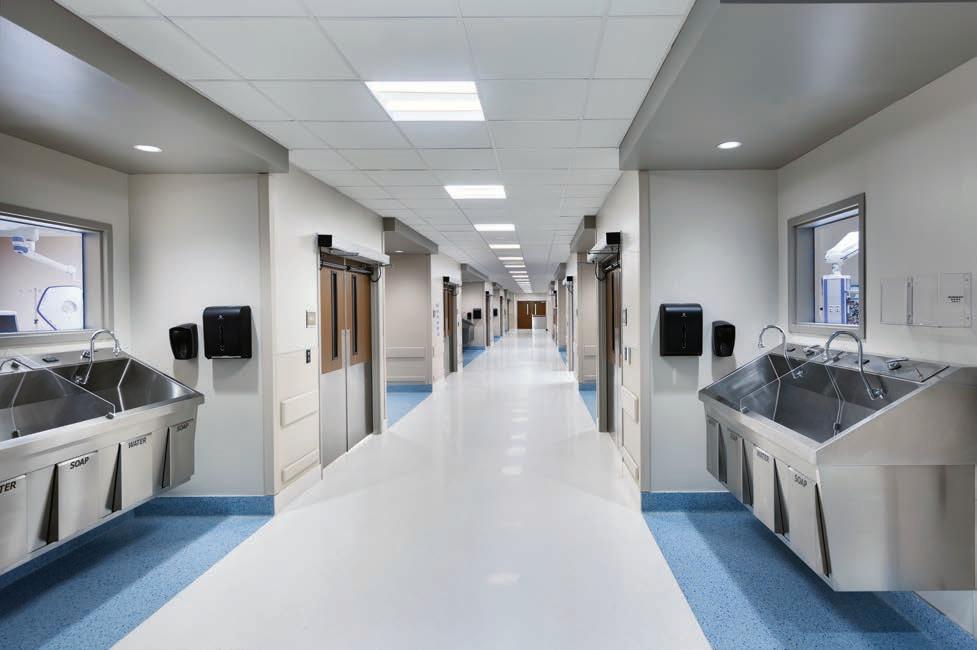

In addition, JMC utilizes the da Vinci Xi Surgical System to perform complex operations through just a few small incisions. One such field where the da Vinci technology is quite useful is operations within the gastrointestinal, thoracic, and cardiac areas, as well as in the treatment of specific types of rare cancers. Furthermore, in the intraoperative radiosurgery operating room, a single targeted dose of radiation can be administered to breast cancer surgery patients immediately after a lumpectomy, pinpointing the cancerous area with a lower amount of radiation than traditional treatments while avoiding nearby healthy tissue.
Nine additional advanced ORs are available for other types of surgeries. Like conducting an orchestra, all 18 of the ORs and the surgical technology within are managed via the Surgical Institute’s facility-wide digital synergy. “Here, we can expand the number of surgeries we can do but with the [necessary] safety and technology—everything’s built in, everything’s on monitors, everything’s integrated,” says Scott Londy, a registered nurse and JMC’s assistant clinical manager for the ORs.

This is just one of the many ways the new Surgical Institute streamlines operations. It also aids in up-to-the-minute communication with nurses and other members of a care team, as well as with a patient’s family or caregiver.
Another overarching goal behind the development of the Surgical Institute was to enhance patient safety as it relates to pathogens, a challenge all hospitals face. Any surgery can potentially expose a patient to viruses and bacteria that can complicate recovery, so mitigating that risk in every way possible was a key focus of the Surgical Institute’s design.
It starts with the pre-operative rooms. Surgical patients now each have their own personal room in which they are prepped for surgery, with doors rather than curtains and attached private bathrooms. There are also several private post-operative rooms with doors for acutecare, high-risk patients.
The entire Surgical Institute utilizes a BeliMed infection control system that employs a multilevel decontamination process on all equipment, including carts and trays: special washing machines, inspection with a magnified lens, steam sterilization, and finally a blast of ethylene oxide gas, a fumigant that can kill even heat-resistant viruses and bacteria. The operating rooms themselves automatically deploy ultraviolet
30 | PINNACLE | jupitermed.com
New sterilization facilities, equipment, and procedures will enhance safety for both patients and health care practitioners.

Jupiter Medical Center has cemented itself as a leader in quality world-class health care.”
—Johnny and Terry Gray “
light to help eliminate pathogens whenever a person leaves the room.
“You want people coming here to feel good knowing that not only does the facility look nice, but it’s truly meticulously cleansed and sterilized,” says Katz. “We already have the fundamentals deeply established as reflected by our extraordinarily low infection rates. We are also proud of our high patient satisfaction scores, which approach 100 percent. That’s a tough thing to improve upon, but what we can improve upon is the technology, patient comfort, patient family comfort, enhanced safety, and continued fine outcomes in patient care.”
Elements of comfort and care are also reflected in the Surgical Institute’s airy, modern spaces. The second-floor waiting room is flooded with natural light and includes an outdoor space, known as the Sue and Bill Ryan Healing Terrace, so loved ones can catch a breath of fresh air.
A transformative lead gift of $25 million from Johnny and Terry Gray, coupled with contributions from other donors, allowed for both an aesthetically pleasing facility and one brimming with the very latest in surgical technology.
“We have been very fortunate, and it is a joy to share that success with others,” say the Grays. “Jupiter Medical Center has cemented itself as a leader in quality world-class health care. We are confident they
will remain innovative and at the forefront of cutting-edge medicine. We are honored to be part of their evolution to meet the growing demands of our community.”
At the Surgical Institute’s ribbon cutting, Traci Simonsen, chief philanthropy officer of the Jupiter Medical Center Foundation, noted the generosity of the Mastroianni Family Foundation, Michael and Elizabeth Ruane, Steven and Katherine Pinard, Joseph and Barbara Charles, Nelson and Nathalie Ferreira, Marshall and Patricia Hilsberg, George and Kathe Damman, Peggy Katz, Joyce Fisher, Bill and Sue Ryan, and the Jupiter Medical Center Auxiliary for helping to make the new facility possible.
Growth continues at JMC. This year, the hospital will break ground on a new Patient Care Tower. It is on track to open in 2025.
“What we want people to know is we are their hospital,” Seeley says. “We are a not-for-profit, independent hospital, and the only reason we exist is to provide the best care to the community. It’s built into our culture and our fiber, and I think that’s why people are so generous to us and give back. We would have never been able to do this without the generosity of the community. This has been a vision for us for a while and it’s just awesome to see it come true.” «
For more information, please call 561.263.4400
jupitermed.com | PINNACLE | 31
HOMEWARD BOUND
Three physicians who grew up in Palm Beach County have returned home to practice at Jupiter Medical Center
By Sandra Gurvis
ROOTS IN MEDICINE AND THE SUNSHINE STATE
Vivek Patel wanted to be a doctor almost from infancy. “My father was a surgeon who moved our family from Binghamton, New York, to Palm Beach Gardens when I was 9 months old,” recalls Patel, now a cardiothoracic surgeon at Jupiter Medical Center’s Robson Heart & Vascular Institute. “As a child, I was always interested in the sciences and enjoyed puzzles and taking things apart. I couldn’t always put them together again, much to the frustration of my parents,” he adds with a laugh.
When Patel was about 14 or 15, his father arranged for him to observe an operation with Dr. Rudy Scheerer, a well-known thoracic surgeon. It was then that Patel found his vocation—and a lifelong mentor.
Not that Patel needed much encouragement. After graduating from Suncoast High School in Riviera Beach, he attended Boston University and later completed an internship and general surgeon residency at the University of Pennsylvania and a cardiothoracic residency at Strong Memorial Hospital at the University of Rochester in New York. He worked as a clinical instructor and aortic surgery fellow at the University of Pittsburgh Medical Center before landing at the Univer-
sity of Texas (UT) in Tyler, where he got his first job at UT Health East Texas, eventually becoming director of cardiothoracic surgery.
When a position opened at JMC in June 2023, he jumped on it. “It was a great opportunity,” says Patel, whose wife and two teenage children will also make the move from Texas at the end of the school year. “They were expanding the cardiac surgery department under Dr. Arthur Katz. Along with a commitment to world-class care, they provide the resources to help make the program the best in Palm Beach County.”
The Jupiter of 2024 is miles away from the sleepy Jupiter where Patel grew up. “My neighborhood was next to a cattle ranch,” he says. “There’s been a huge increase in population and growth.”
He is delighted to give back to a community that has given so much to him and to a hospital that prioritizes care above all else. “I’ve worked in several hospitals and there can be differences between what the doctors need and what the hospital can give them,” says Patel. “JMC is in the position to deliver whatever is required, not only for doctors but for patients as well.” Plus, now he knows how to put things back together.

32 | PINNACLE | jupitermed.com
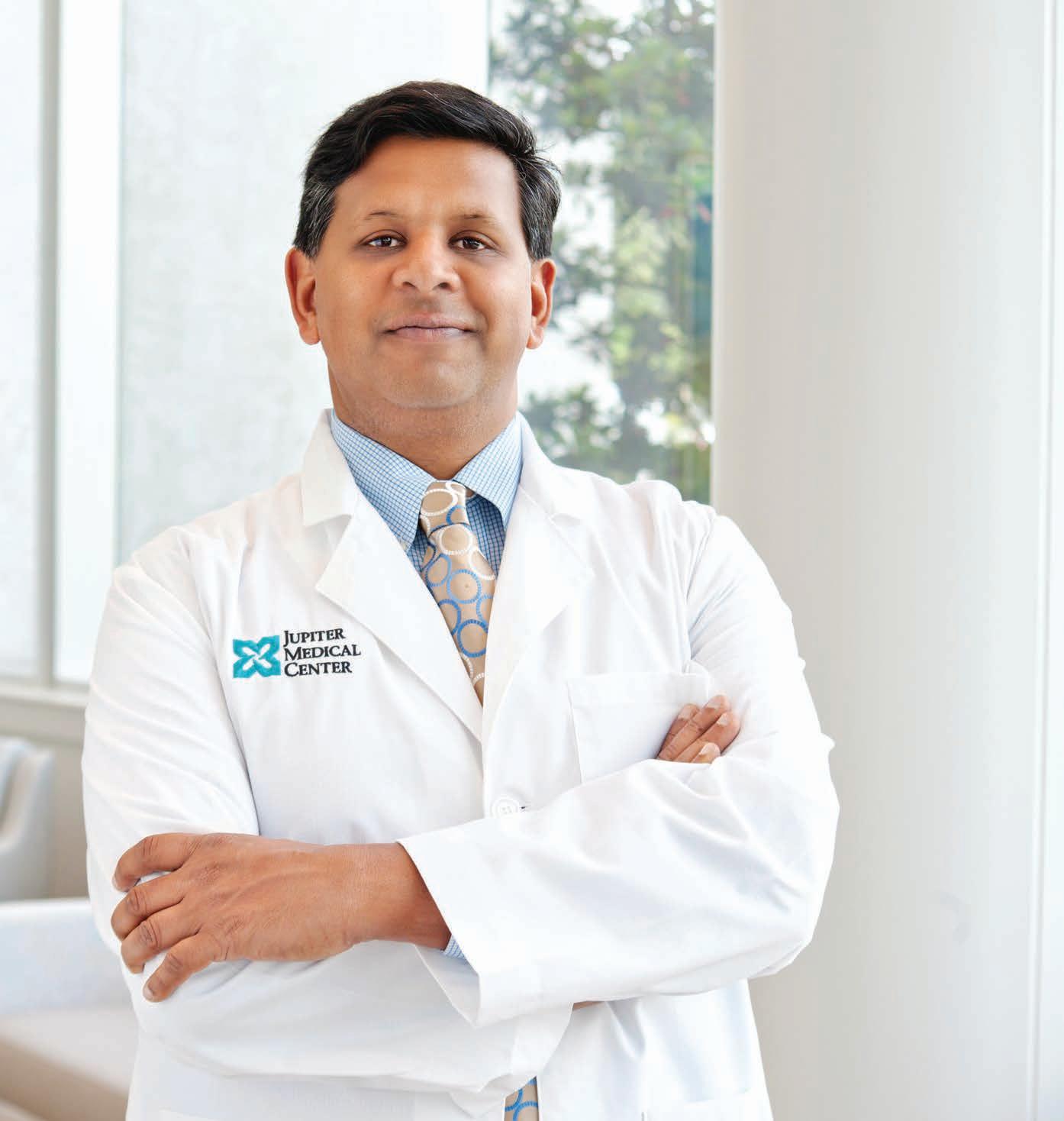
JMC is in the position to deliver whatever is required, not only for doctors but for patients as well.”
—Dr. Vivek Patel “
jupitermed.com | PINNACLE | 33

34 | PINNACLE | jupitermed.com

The essence [of JMC‘s culture and environment] remains unchanged. Perhaps, it has evolved into something even better than when I left.”
—Dr. Julian Berrocal “
BACK TO WHERE IT ALL BEGAN
In the quiet corridors of Jupiter Christian School, a young Julian Berrocal, self-proclaimed “nerd,” harbored dreams as vast as the Florida sky. His aspirations oscillated between the cosmic wonders of NASA and the noble calling of medicine. “We moved from Washington, D.C. to Florida, where the space program was a big deal,” he reflects. “But my grandfather, one of the first pediatricians in Puerto Rico, shared stories that stirred a different kind of inspiration in me.”
As a senior at Jupiter Christian School, Berrocal not only excelled academically and established a competitive swim team but also orchestrated an opportunity that would set the stage for his future. “I was at Jupiter Medical Center for a career week, shadowing an anesthesiologist and exploring various subspecialties, including general and vascular surgery, surgical oncology, and orthopedic surgery,” Berrocal recounts. A serendipitous connection through his swim team paved the way for a teenage volunteer program in JMC’s preoperative area and recovery rooms, leaving an indelible mark on his journey.
Beyond the draw of the operating rooms, Berrocal found himself scrubbing beds, transporting patients, and forging connections with physicians, including Dr. John Rimmer, Dr. Thomas Rowe, Dr. Thomas Lipin, Dr. Barry Miskin, and many others still active at JMC.
The trajectory of Berrocal’s ambition led him to the University of Miami for his bachelor’s degree and the Medical College of Wisconsin for his MD. His professional pilgrimage included a general surgery internship and residency in New York City, followed by an interdisciplinary breast fellowship at Yale University. However, the allure of his roots beckoned him back.
In January 2023, Berrocal returned to JMC, now as a distinguished breast surgeon and oncologist within the physician group at the Anderson Family Cancer Institute. Here, he rejoined forces with one of his mentors and the Medical Director of the Comprehensive Breast Care Program at JMC, Dr. John Rimmer, weaving a narrative that seamlessly intertwined his past and present.
Reflecting on JMC’s transformation since his volunteer days, Berrocal notes the significant expansion— more operating rooms, a pediatrics department, and a cutting-edge cancer center. Yet, amid the growth, he observes a consistency in culture and environment. “The essence remains unchanged,” he says. “Perhaps, it has evolved into something even better than when I left.”
As Berrocal tends to patients and contributes to the legacy of JMC, his teenage volunteer program continues to thrive, a testament to the enduring impact of a seed planted years ago in the fertile soil of ambition and community.
jupitermed.com | PINNACLE | 35
—Dr. Kevin Green “
The level of sophistication and teamwork among the staff helps us provide the optimal diagnostics and care to our patients.”
FLORIDA FAMILY MAN
Although born in New York in a family with Jamaican ancestry, Kevin Green has lifelong ties to medicine and Florida. “My mother was a nurse practitioner, so I became interested in the field from an early age,” he says.
His ambitions gelled when, as a young teen en route between New York and Orlando, his family got a call about a relative’s accident in North Carolina. “He was in the ICU, in very bad shape,” Green describes. “I felt terrible and decided then that I never wanted to be in a position where I would be unable to help anyone who was hurt.”
The family moved to the Jupiter area while Green was in high school. Upon graduating from Palm Beach Central, he attended the University of Central Florida in Orlando and earned a bachelor’s in molecular microbiology. He obtained his MD in 2015 and decided upon a specialty. “At first, I thought I wanted to be an orthopedic surgeon with a focus in sports medicine, but then I considered internal medicine because I wanted to work closely with patients.”
Although Green completed his internal medicine residency at the University of Florida (UF), the fast-paced arena of critical care piqued his
interest. “I became involved in pulmonary medicine, which not only requires procedural skills but also the ability to deal with patients with complex symptoms,” he says. “COVID [has] resulted in so many improvements in the recognition and treatment of interstitial lung disease, fibrosis, and related ailments.”
A pulmonary and critical care fellow at the UF College of Medicine since 2020, Green came to Jupiter Medical Center in July 2023, bringing with him a lengthy list of diagnostic skills and publications— made even more impressive because he only began his specialty training in 2016. His wife, Dr. Anastasiya Quimby, a head and neck surgeon at JMC, was the one who clued him into the job opening.
Green feels that he has found a real home at JMC, as the hospital has provided him with a chance to develop and “give back” to a specialty that is critical, delicate, and rapidly evolving. “Dr. Kenneth Fuquay [medical director of JMC’s Sleep Center and Respiratory Services] and the entire thoracic oncology staff have provided excellent support,” he says. “The level of sophistication and teamwork among the staff helps us provide the optimal diagnostics and care to our patients.” «

36 | PINNACLE | jupitermed.com

jupitermed.com | PINNACLE | 37
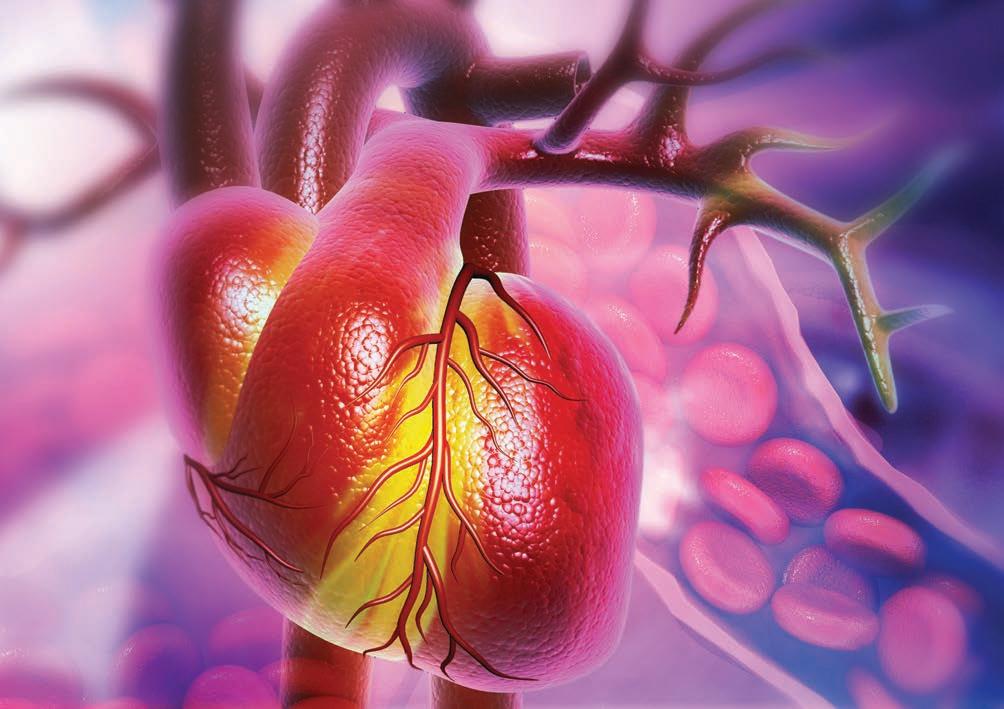
GOES ON The Beat
The team at Jupiter Medical Center’s Structural Heart Program offers a comprehensive approach to detecting, monitoring, and treating structural heart disease
By Nicole Neal
Eating correctly and exercising regularly go a long way toward preventing coronary artery disease, the most common form of heart disease in the United States. But as the country’s population ages, another form of heart disease is gaining attention. And it often can’t be prevented with diet and exercise. Structural heart disease focuses on defects or abnormalities of the heart’s structure, including its valves (four in total), muscular walls, and chambers. Some of these issues are present at birth; congenital heart disease affects at least eight out of every 1,000 babies born in the United States each year, according to the Mayo Clinic. But structural heart issues can also be brought on by an underlying disease or injury and as part of the aging process. An estimated one in eight people over age 75 have moderate to severe structural heart disease.

38 | PINNACLE | jupitermed.com

jupitermed.com | PINNACLE | 39

The good news for patients in Palm Beach County and the surrounding areas is that Jupiter Medical Center’s Structural Heart Program offers a host of innovative treatments showing lasting results.
“We are poised to take on complex conditions,” says Dr. Michael Sabbah, an interventional and structural cardiologist who arrived at JMC in August from the Mayo Clinic in Rochester, Minnesota. He notes that JMC has assembled a multidisciplinary team of experts who stay with the patient through all stages of the medical journey—from initial diagnosis through follow-up care. “That comprehensive approach is a unique experience. It’s something you see at large academic institutions. But that’s in line with where we’re heading. Jupiter Medical Center is going to be the regional leader in structural heart disease.”
A Team Approach
To understand structural heart conditions, it helps to learn about the structure of the heart. A two-sided pump, the heart is the hardest working muscle in the body. Each day, it beats approximately 100,000 times and circulates around 2,000 gallons of blood to organs, tissues, and cells.
Sabbah offers a mini anatomy lesson: “Blood, which is full of oxygen and nutrients, comes out of the lungs and into the left atrium—one of the heart’s two upper chambers
Dr. Michael Sabbah (below) is part of JMC’s Structural Heart Program, which is dedicated to the detection and treatment of structural heart defects or abnormalities.


that acts as a holding tank. That holding tank empties into the biggest pumping chamber of the heart, the left ventricle. The left ventricle then goes on to pump blood out of the heart and into the largest blood vessel in the body, the aorta. Blood travels through the aorta and to the other blood vessels, delivering oxygen and nutrients to organs and tissues. Once ‘emptied,’ blood returns to the heart through the veins and ultimately the heart’s right atrium, the other right-sided holding tank. That tank then sends blood down into the right
ventricle. The right ventricle then directs blood back to the lungs to pick up nutrients, and the cycle goes round and round.”
It’s a marvel of anatomical engineering, but things can and do go wrong. “Show me a man-made pump that can go 90-plus years and never have a problem,” Sabbah quips. Sometimes the flow of blood can get redirected, essentially moving in the wrong direction, or there might be a narrowing of the aortic valve, the leaking of a valve that does not close all the way, a hole in the heart, or a thickening
40 | PINNACLE | jupitermed.com

of the heart muscle. Depending on the specific condition, patients may be asymptomatic for years. Then eventually they may experience fatigue, dizziness, chest pain, shortness of breath, or other symptoms that make daily living less enjoyable or even challenging. In some cases, heart failure or a heart attack can occur.
The breadth of conditions treated within JMC’s Structural Heart Program—from aortic valve stenosis/insufficiency to tricuspid valve regurgitation, atrial septal defects, and more— makes the collaborative “heart team approach” critical, says Sabbah. Among the experts on board through a patient’s care journey are physicians in interventional cardiology, structural cardiology, cardiac surgery, radiology, and electrophysiology. A structural coordinator provides a single point of contact for patients, guiding them through the process.
“We take on a very patient-centered approach,” explains Sabbah. “All the unique skill sets coming to the table make it possible to deliver truly personalized care.”

jupitermed.com | PINNACLE | 41

Innovative Procedures
The most common structural heart issue, valve disease, affects about 2.5 percent of the U.S. population, according to the Centers for Disease Control and Prevention (CDC). The condition is more common in older adults, with the CDC estimating that 13 percent of people born before 1943 have some form of valvular heart disease.
The valve condition that Sabbah and his colleagues “far and away” most frequently see and treat is aortic valve stenosis, which the American Heart Association (AHA) says affects more than 12 percent of Americans over age 65. With aortic stenosis, a buildup of calcium narrows the valve connecting the biggest heart chamber to the aorta, restricting the flow of blood and forcing the heart to work harder. Patients may be asymptomatic at first, but as the disease progresses, they may experience shortness of breath, dizziness, fainting, chest discomfort, and generalized fatigue. If left untreated, heart failure can occur.
Increasingly, the treatment of choice is transcatheter aortic valve replacement, or TAVR. This minimally invasive procedure allows for the placement of a new prosthetic valve in the heart via a catheter inserted elsewhere in the body. No surgical incision needed.
“TAVR across the United States has exponentially increased year over year,” says Sabbah, who points to a landmark five-year study as a turning point for the procedure. Published in 2020 in The New England Journal of Medicine, the study found that patients who had undergone TAVR showed no significant
“All the unique skill sets ... make it possible to deliver truly personalized care.”
—Dr. Michael Sabbah
difference in incidence of serious stroke or death than those who had undergone surgical valve replacement.
Doctors at JMC are also using minimally invasive procedures for other conditions, including mitral valve regurgitation and atrial fibrillation. The prevalence of both conditions increases with age.
With mitral valve regurgitation, which af-
fects more than 2 percent of the population and about one in 10 people over age 75, the valve located between the upper- and lowerleft chambers of the heart doesn’t fully close, causing blood to leak backward. Just like in aortic stenosis, the condition can develop slowly and without symptoms. If mitral valve regurgitation is severe, heart failure can occur. To treat this, structural cardiologists at JMC attach a small “clip” via a catheter to the mitral valve, essentially sealing up the leaking portion of the valve while still allowing blood to flow in the normal direction.
A similarly minimally invasive procedure is also available for patients with atrial fibrillation, the cause of about one in seven strokes, according to the CDC. An implant is inserted via a catheter that closes the heart’s left atrial appendage, where a blood clot is most likely to form in patients with atrial fibrillation. This significantly decreases the patient’s risk of stroke and, in many cases, allows them to discontinue blood thinning medications.
“Catheter-based procedures used to be reserved only for high-risk patients—those who were not good candidates for open-heart surgery,” Sabbah says. “Now, we have the knowhow and approval to provide these therapies on moderate and even low-risk patients.”
(Turn to page 44 to learn more about minimally invasive cardiac procedures at JMC.)

42 | PINNACLE | jupitermed.com
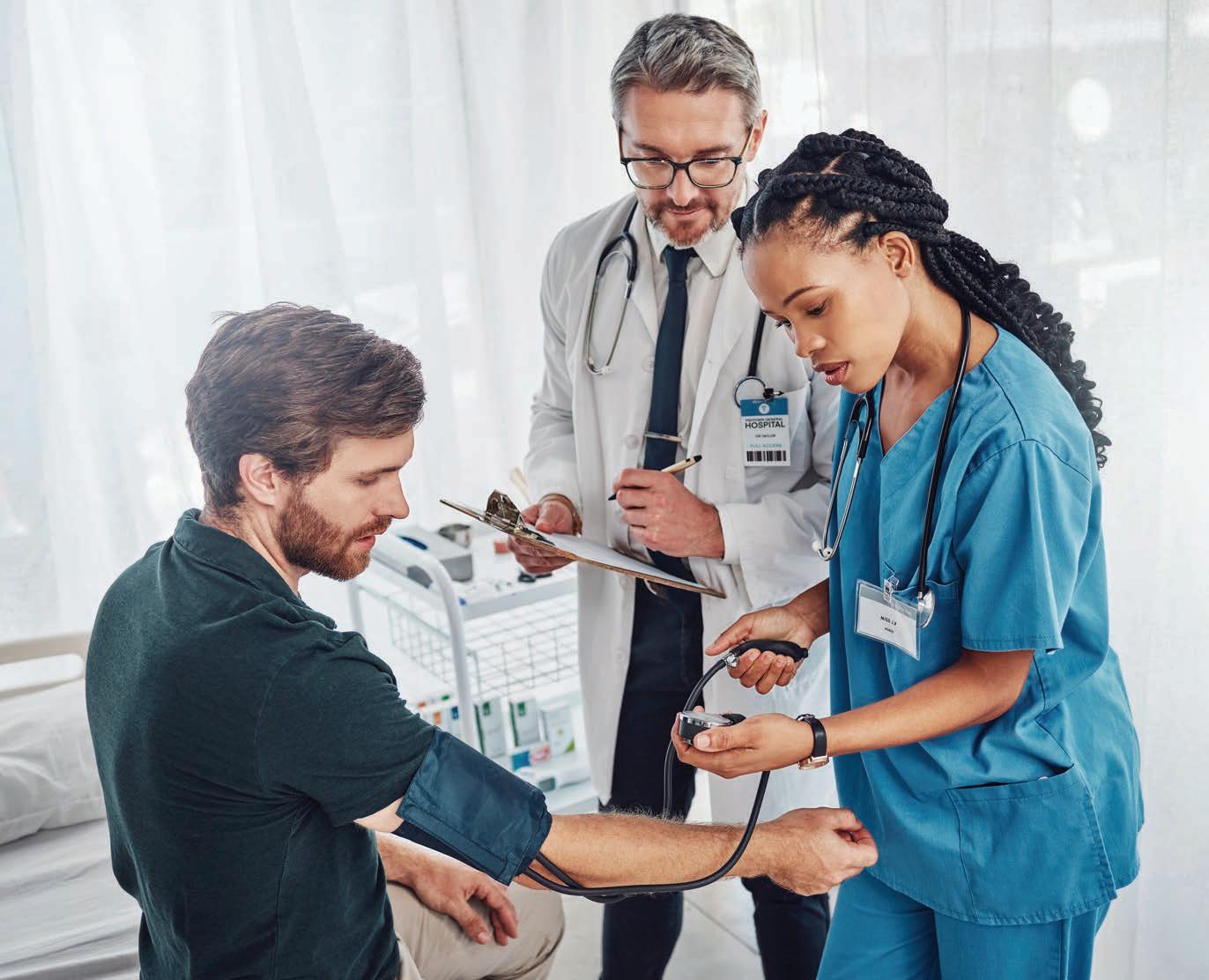
Timing is Everything
A big benefit of these less invasive treatments is much quicker recovery times. The catheter-based procedures generally involve an overnight stay in the hospital followed by about a week or so of taking it easy, Sabbah explains. The recovery period for traditional surgery is usually four to eight weeks, according to the AHA. “When patients find out they can get a TAVR or another device and go home the next day, they just light up,” Sabbah says.
However, Sabbah stresses that there are times when surgery is “absolutely the best option and the right choice.” In these instances, for example, another procedure, such as a coronary bypass, may also be needed. In
other cases, a patient may have vascular issues that prohibit a minimally invasive approach. And for many younger patients, he says, surgery is often the best choice because mechanical valves, which are not available via the minimally invasive approach, offer greater longevity.
Sabbah also points to a little-heralded treatment option that is just as important as any procedure done at JMC’s Structural Heart Program: the choice to simply treat with medications and monitor a patient. “That’s an important part of our comprehensive approach,” Sabbah says. “Knowing [when] to do a procedure is critically important. The structural coordinator and physicians’ group will monitor the patient and then
intervene when it’s appropriate.”
His message to the patients of today and tomorrow? Evermore promising treatments are now available—and in the works—to extend and improve lives. “There’s a lot of interest in structural heart care,” he says. “There was an unmet need and it’s now getting a lot of attention. There are reasons to be very optimistic.” Sabbah sees proof of that every day. “We have patients who come in and can barely breathe—they feel terrible. To see them walk out the next day after a procedure feeling so much better—there’s just nothing better than that.” «
For more information, please call 561.627.3130
jupitermed.com | PINNACLE | 43
HEART of the Matter
Minimally invasive cardiac surgery provides maximum benefit for heart patients on the road to a healthier life
By Kelley Marcellus
When an extremely active woman in her 80s noticed that she was feeling increasingly fatigued, she began to worry. Little by little, her quality of life deteriorated and ordinary tasks became more challenging. She started to question her ability to live independently and brought her symptoms to the attention of her doctor. After an initial evaluation, her doctor discovered that she was experiencing a heart rhythm abnormality. The normal course of treatment was to begin medications such as blood thinners to manage the condition, but she hoped for a more permanent resolution. Her case came to the attention of Dr. Vivek Patel, a cardiothoracic surgeon at Jupiter Medical Center. Patel is part of a team of physicians at the Robson Heart & Vascular Institute
who have completed extensive training and bring years of experience in the diagnosis and treatment of cardiac conditions to their roles at JMC, which has become known for its ability to employ minimally invasive cardiac treatment when medically appropriate.
“Evaluation in this patient revealed that she had a valvular heart problem that was causing the heart rhythm issue,” Patel says. “She successfully underwent a minimally invasive mitral valve replacement. Now her symptoms are improving, and her quality of life is returning.”
Traditionally, cardiac surgery involves an approach called a median sternotomy, or an opening of the chest and division of the breastbone to expose the heart for complex procedures. “This has always been a mainstay of cardiac surgery because it offers great exposure to the heart,” Patel explains. “The limitation is that patients are restricted from

44 | PINNACLE | jupitermed.com

jupitermed.com | PINNACLE | 45

“[Minimally invasive] procedures were really designed in order to maximize patient healing.”
—Dr. Vivek Patel
physical activity for a significant amount of time after surgery to allow their chest bones to heal.”
Daily activities like simply getting out of bed and caring for oneself can be extremely difficult and uncomfortable following this kind of cardiac surgery. Driving could be prohibited for as long as two months. By comparison, those who have minimally invasive proce-
dures can resume their usual routines sometimes within two weeks— or even sooner. The faster healing also prevents other health concerns from worsening. Patel says older patients often have lung disorders or orthopedic conditions that can deteriorate with prolonged bed rest.
“[Minimally invasive] procedures were really designed in order to maximize patient healing and allow them to get back to functional activity faster,” Patel says.
Structural issues with the heart, such as aortic or mitral valve disease, are the conditions cardiothoracic surgeons most commonly correct with minimally invasive surgery (turn to page 38 to learn more), but patients with cardiac tumors, atrial fibrillation, heart defects, holes in the heart, and tricuspid valve problems are increasingly becoming candidates for these procedures. In fact, Patel recently removed a blood clot from a young girl’s heart, successfully returning her to good
46 | PINNACLE | jupitermed.com

The patient population for minimally invasive surgical procedures is growing to include complex conditions such as cardiac tumors.
health with little downtime.
Minimally invasive procedures typically involve several small incisions made into a patient’s chest wall, through which a small camera called an endoscope and medical instruments—some operated by robotic technology—are inserted. These instruments then access the heart by going between the ribs. The patient loses less blood, has a lower risk of infection, experiences less pain and, therefore, has a lesser need for pain medications, and requires less time on a ventilator, which assists with breathing during a minimally invasive approach.


Most patients will be in the hospital for a much shorter stay and, because incisions are smaller, they heal quicker and scar less. There’s also a reduced risk of infection.
Some procedures are conducted through a transcatheter technique. With this, the surgeon will access an artery in the patient’s groin, leg, arm, or chest and feed a wire, catheter, and other devices through the blood vessel. “It allows us to repair heart valves, to close defects, and provide treatment for cardiac arrhythmias,” Patel says. “Transcatheter procedures have a very rapid recovery. Some patients spend 24 hours
jupitermed.com | PINNACLE | 47
“There is a spectrum of treatment options, and as a team, we can make a reasonable assessment of what is in the patient‘s best interest.” —Dr. Vivek Patel
or less in the hospital before going home and returning to activity, typically in a few days.”
Patel references a patient with advanced lung disease who recently underwent a transcatheter aortic valve replacement, or TAVR. “He had been very sick for several months,” Patel says. “In the past, he would have been deemed too high risk to undergo any kind of surgery. With the new innovations and technologies, we were able to safely perform a valve replacement on him through the transcatheter approach and send him home the next day.”
For such patients with comorbidities, minimally invasive procedures such as TAVR can make it easier for physicians to employ effective treatment plans. “We often are not treating the patient’s primary health concern, which can make a cardiac situation very complicated,” Patel explains. “If we can minimize the amount of pain, trauma, and healing, then his overall care is likely to be much more effective.”
Patients with heart failure—which is a kind of bucket description used when the heart can’t provide enough blood throughout the body, the most common cause of which is coronary artery disease, where blockages in the blood vessels slow or stop the flow of blood—have benefitted for more than 30 years from a type of catheterization to improve their condition. Newer techniques that fall under the umbrella of less-invasive surgeries include the installation of a “pump that alleviates some of the acute problems with heart failure,” Patel says. “It can allow the heart to recover so that we can then fix the underlying cause.”
Outcomes are typically as good or better than a traditional open procedure might be, depending on a variety of factors. For example, many cardiac patients have additional health concerns that can impinge or complicate recovery. Some have factors that will make them ineligible for minimally
invasive treatment all together.
Those with severe peripheral vascular disease might not be good candidates, nor would a patient with multiple issues that needed to be fixed at the same time. “Other times there’s an issue with the body the patient inhabits,” says Patel, adding that patients who are obese or who have had large breast implants may not be eligible for this surgical field. “That is why each patient needs to be thoroughly evaluated. It requires experience to know who the candidates are for these procedures.”
Experience is, in fact, what sets JMC apart from many community hospitals when it comes to cardiac care. The team at the Robson Cardiac & Vascular Institute has focused on expanding its minimally invasive cardiac procedures over the last three years, Patel says, and JMC has made a concerted effort to bring together cardiac experts with a lot of experience and areas of expertise. “There is a spectrum of treatment options, and as a team, we can make a reasonable assessment of what is in the patient’s best interest.”
Patel adds that by offering these services at JMC, patients are able to recuperate close to, if not at, home. Support of family and familiarity of the area is less stressful for patients and caregivers, and access to local cardiac rehabilitation and support services to institute a heart healthy lifestyle and necessary monitoring all lead to more successful outcomes. Being within a short drive of a surgeon’s office makes follow-up care easier and encourages the patient to reach out with worries sooner.
“Prevention is important, too, because when a condition is left too long a heart may become too weak to treat,” Patel says. “Early diagnosis and detection of a problem can often lead to the least invasive treatment down the road.” «
For more information, please call 561.775.8447

48 | PINNACLE | jupitermed.com

jupitermed.com | PINNACLE | 49
DONOR PROFILE
from GivingExperience
After their son sustained a life-altering injury, Bill and Sue Ryan refocused their philanthropy toward health care and supporting patients’ families
By Heather Graulich | Portrait photography by Jerry Rabinowitz
When a loved one gets hurt or is ill, those holding vigil in hospitals can find themselves spending hours, days, even months sitting in waiting rooms.
Jupiter residents Sue and Bill Ryan know this waiting game all too well, and that’s why they chose to earmark a $1.5 million gift to Jupiter Medical Center for the outdoor Sue and Bill Ryan Healing Terrace at the hospital’s new Johnny and Terry Gray Surgical Institute.
In 1987, when the family lived in Miami Lakes, the Ryans’ son, Bill Jr., was home during a break from Purdue University and joined some former baseball teammates to play volleyball on the beach.
Like his father, Bill Jr. was a very good athlete, having played on the 1986 Hialeah-Miami Lakes Senior High School national championship baseball team with a record of 35-0. Bill Sr. had been a high school wonder as well, with an undefeated pitching record of 32-0. He would later go on to play at Notre Dame and eventually sign as a “bonus baby” in the Milwaukee Braves organization, playing with the likes of Henry Aaron, Warren Spahn, Joe Torre, and many other stars from that era.
During the beach outing with his national championship teammates, Bill Jr. and his friends decided to go for a swim, taking turns diving off a nearby jetty. One by one, the other boys dove in with no trouble, but somehow— whether it was a dip in the tide or some other factor—Bill Jr.’s head struck bottom.
“Actually, Billy was very lucky in that one of the kids knew CPR well,” says Bill.
Bill Jr.’s friend kept him alive while the entire team awaited the arrival of a helicopter that would take Bill Jr. to the emergency room at Jackson-Memorial Hospital in Miami.
“When our son got hurt, he was in the ICU for several weeks, and there was no waiting room,” says Sue. “We sat in the hallway or wherever we could find space, with extremely ill people all around us. It was a very uncomfortable situation to be dealing with during a life-or-death crisis like that.”
Bill Jr. spent the next 10 months in the hospital, giving the Ryans what they call “rare insight” into the needs of patients’ families. It also helped guide them on a new course of action in medical philanthropy.
About 18 months before Bill Jr.’s injury, Marc Buoniconti, son of Hall of Fame football player
Nick Buoniconti, also suffered a spinal cord injury during a college football game. As Bill explains, he and Nick had been friends at Notre Dame, and because of their sons’ injuries, they developed a close relationship with a neurosurgeon, Dr. Barth A. Green, whose dream had always been to find a cure for spinal cord paralysis. Through that friendship, Bill and Sue helped Dr. Green and Nick launch the Miami Project to Cure Paralysis, which is now a respected international facility for research and rehabilitation.
Both Bill Jr. and Marc were left quadriplegic due to their injuries, but they have lived long, productive lives. Marc continues to be very active with Dr. Green, spearheading efforts at the Miami Project. And Bill Jr. is very proud of his three sons—Bill III, Jack, and Jake—that he and his wife, Karrie, were blessed with during their marriage.
“I don’t know anybody like Billy and Marc, who have had the willpower and desire to be independent and function so well,” says Bill. “It’s been incredible.”
The elder Ryan has had more than his fair share of hospital stays, having undergone more than 40 surgeries, including two open-
50 | PINNACLE | jupitermed.com
heart surgeries. He points out that Sue has had a lot of practice caring for folks post-op.
“I’ve had a lot of practice sitting in waiting rooms waiting for word on Bill’s 41 surgeries,” says Sue. “When the opportunity presented itself for a ‘healing terrace,’ it very much spurred my interest. What a difference it will make for families to be comfortable, able to relax, spend a few minutes outside, and get some fresh air while waiting for word from the doctors who are caring for their loved ones. We felt we needed to provide a different kind of experience for those undergoing the stress and worry of feeling so helpless.”
That’s the goal of the healing terrace at JMC’s new Surgical Institute, a spacious, open patio just outside the main waiting lounge. The terrace offers afternoon shade and tables and chairs where families can sip coffee from the Surgical Institute’s café or just enjoy breezes from the nearby Atlantic.
Besides JMC, the Ryans are active donors in more than a dozen other charitable causes. They have scholarships for students at Fair Haven Union High School in Vermont and Notre Dame, and they support several food pantries in Vermont, where they summer at their Hilltop Farm near Lake Champlain.
“We grew up in very modest-income households, and some might say that we were downright poor,” says Bill. “But I always remember my mother telling us, ‘The more generous you are, the more the good Lord gives back to you, so always exceed what you think you can afford to give.’ She was right.”
The couple has a special focus on health services, with one of Sue’s favorite charities being K9s For Warriors, a group that trains shelter dogs to assist military veterans. Their own beloved golden retriever, Ruthie, mothered a litter of eight puppies and all of them became service dogs. They are also long-time supporters of Honor Golden Retrievers in Charlotte, North Carolina, which once gave a puppy named Liberty to President Ford when he was in the White House; President Ford in turn passed on a puppy from Liberty to Jack Nicklaus.
“We think Jupiter Medical Center is well on

its way to becoming a world-class facility and we are fortunate to have it in this community,” says Bill. “They have a wonderful board, and Amit Rastogi, president and CEO, is a great leader. It’s easy to see that they are on a mission to achieve excellence in all phases of health care.”
Sue goes on to praise the team members at every level, including the volunteers.
“They’re all so helpful and go out of their way to make the hospital experience easier for us,” she adds.
“We’re proud to have the opportunity to give here,” says Bill. “We are blessed to be able to continue to expand our philanthropy right here in our backyard with Florida’s most outstanding health care facility, Jupiter Medical Center.” «
jupitermed.com | PINNACLE | 51
Sue and Bill Ryan at their namesake terrace

your heart could not be in better hands
The Robson Heart & Vascular Institute at Jupiter Medical Center is transforming cardiovascular health care in the region. At the forefront of innovative heart and vascular treatments, we take a multidisciplinary approach combining physician expertise with leading-edge technology to provide personalized care for every patient.
With physician expertise second to none, our team includes cardiologists, interventional and structural cardiologists, cardiac electrophysiologists, cardiac surgeons, and an experienced support team. The newest technology and minimally invasive techniques offer patients the latest advancements in treatment options to improve their heart health including:
• AFib Center of Excellence
• Structural Heart Program
• Robotic assisted mitral valve surgery
• Minimally invasive aortic and mitral valve procedures
• Advanced cardiac surgery including off-pump bypass surgery
Meet our award-winning physicians at jupitermed.com.
EVENT PHOTOS
HIGHBALLS & HIBISCUS
September 23, 2023
Eau Palm Beach Resort & Spa, Manalapan



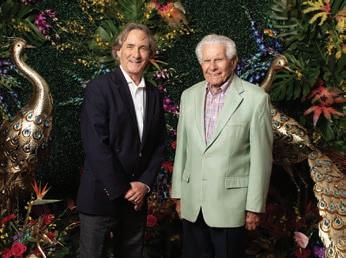


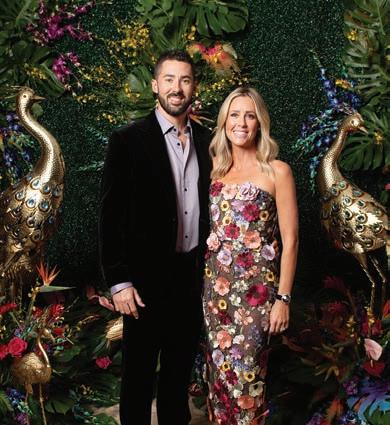


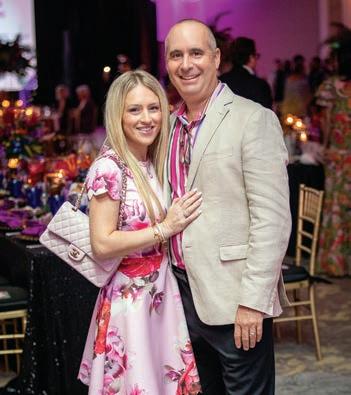
jupitermed.com | PINNACLE | 53
TRACEY BENSON PHOTOGRAPHY
Lynn and Mike Menery, Dory and Brad Faxon, Marissa and Ryan McGovern
Dr. Michael Connor, Jay Cashmere, Angela Burigo, Dr. Jeanmarie Connor
Kavita Channe, Rich Nestro
Michael Stechel, Dr. George Stechel
Nicholas Mastroianni III and Jessica Mastroianni
Justin and Aliya Howard
Mark and Nika Ciarfella
Patty and John McDonald
Mary Lynn Magar, Dr. Amit Rastogi, Robert Stilley
Lindsey and Garry Berger
EVENT PHOTOS
AN EVENING ON THE RANGE WITH BRAD FAXON AND TOM FAZIO
November 11, 2023
Old Marsh Golf Club, Palm Beach Gardens

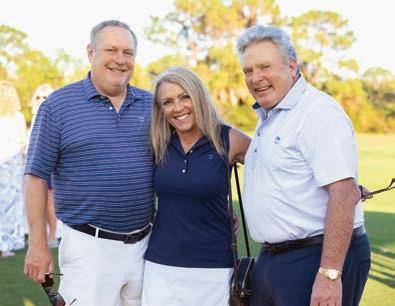




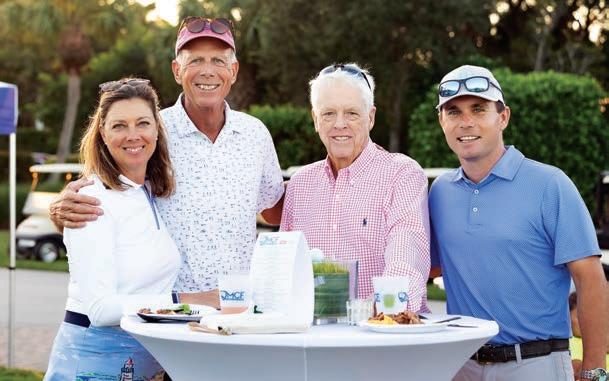
54 | PINNACLE | jupitermed.com
TRACEY BENSON PHOTOGRAPHY
Tom Fazio, Brad Faxon
Mark Kasten, Carol Griffith, Marty Dytrych
Tom Long, John Galvin, Jimmy Long
Peter and Missy Crisp
Traci Simonsen, Stephanie and Sean Gardiner
Carolyn Haggerty, Linda Edelman, Peggy Bonvechio, Penny Miller
Nancy and Dr. Russell Bourne, Fred Harkness, Jared Werner
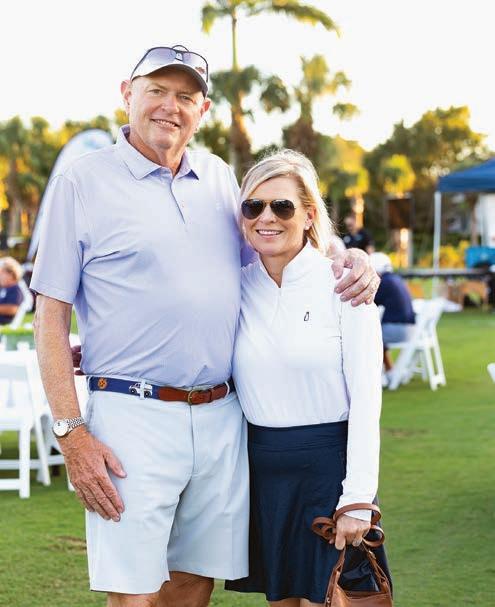
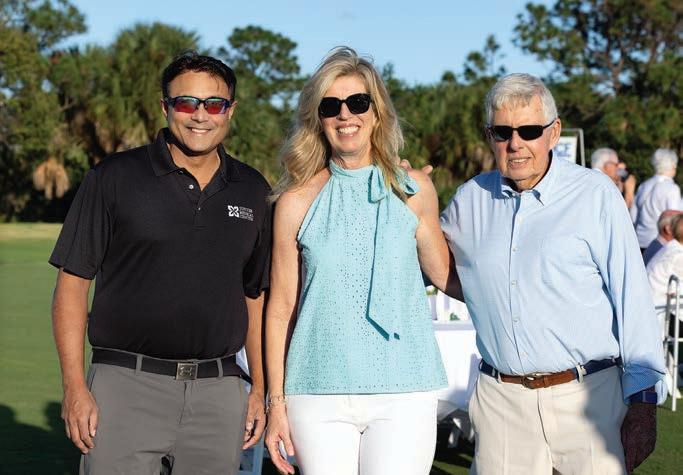
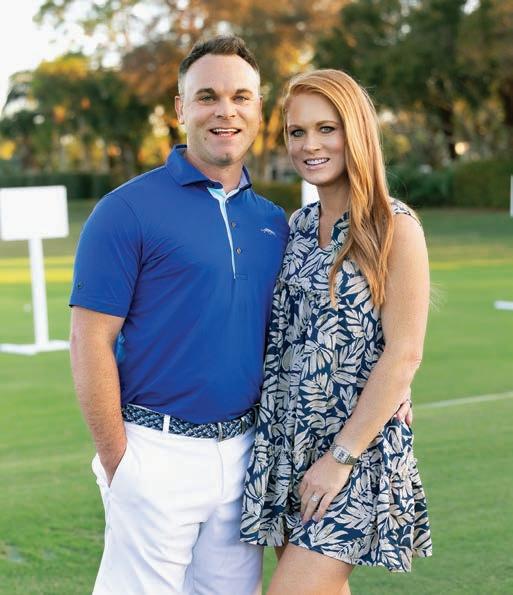



jupitermed.com | PINNACLE | 55
TRACEY BENSON PHOTOGRAPHY
John and Stephanie Greisch
Justin and Aliya Howard
Dr. Amit Rastogi, Traci Simonsen, Peter Lund
Chris Jones, Anderson Slocom
Sue Fazio, Tammy Ehrmann, Dory Faxon
Liz Gehl, Colleen Waters






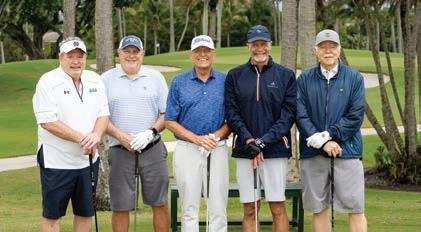


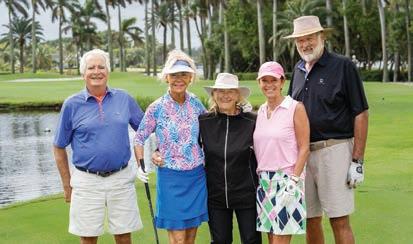

56 | PINNACLE | jupitermed.com VISUAL ENTERPRISES
Andrew Knight, Jeff Knight, Dan Terlescki, Angelo Schiralli, Brad Ball
Jim Souers, Trevor Souers, Val Skinner, John Ricci, Ashley Souers
Tom Fazio, Dr K. Adam Lee, Gavin Fazio, Jim Seabury
Jeff and Kathy Rold, Judy Dickenson, Judi Hefferon, Herb Martens
Jamie Neher, Andy Neher, Hugo Leon, Wally Uilhein, Andy Campbell
Steve Haggerty, Gene Sauers, Gary Tardiff
Laurie Seabury, Sue Fazio, Michelle McGann, McKenna Torcivia, Jorj Morgan
Marty Dytrych, Mark Kasten, Jerry Tucker, Kurt Sylvia, Harry Rhoads
Phil Morse, Peter Lund, Wilson Zehner, Kieran Duffy, Lee Paton
Scott Collins Jr., Neal Kutner, Mike Gray, Scott Collins Sr., David Toomey
Liz Gehl, Colleen Waters, Bud Cauley, Marcia Trantas, Pat Eston
GOLF CLASSIC
13,
Island Club,
Sound
EVENT PHOTOS CHARITY
November
2023 Jupiter
Hobe
November 13, 2023






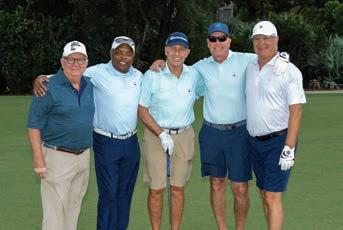
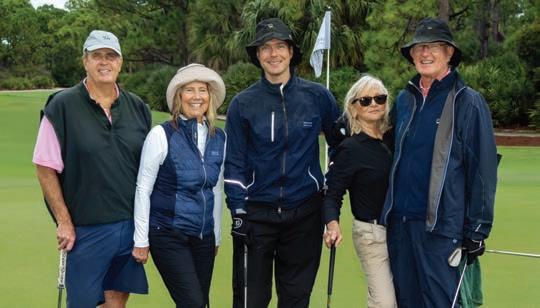
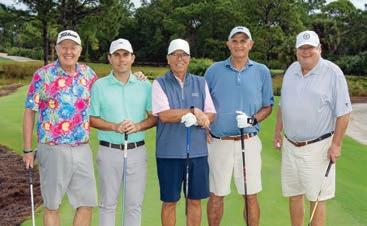

jupitermed.com | PINNACLE | 57
VISUAL ENTERPRISES
Mike and Judy Campbell, David Morano, Rhonda and Mark Sandridge
Pat Rooney Jr., Tom Rooney, Matt Cahill, Kyle Henderson, Brian Rooney
Mike Harrigan, Bruce Harwood, David Storch, Eric Levitt, Mike Viola
Brad Faxon, Cary Sciorra
Ralph Carbone, Missy Crisp, Paul Emmi, James Redfern, William Hoffer
Tim Donahue, Linda Edelman, Dr. Amit Rastogi, Jayne Donahue, Donna and Alan Perkins
Paul and Mary Humenansky, Eric Veilleu, Nancy and Mike Vespoli
Phil Clark, Jared Warner, George Klahre, Doug Fuge, Jim McKenna
Larry Schneider, Anderson Slocum, Tommy Hutton, Chris Jones, Steve Boruff
Sean Gardiner, Justin Howard, Brad Faxon, Ryan Smith, Dustin Ballard
CHARITY GOLF CLASSIC
Medalist Golf Club, Hobe Sound
EVENT PHOTOS
JOHNNY AND TERRY GRAY SURGICAL INSTITUTE RIBBON CUTTING
November 30, 2023
Jupiter Medical Center, Jupiter

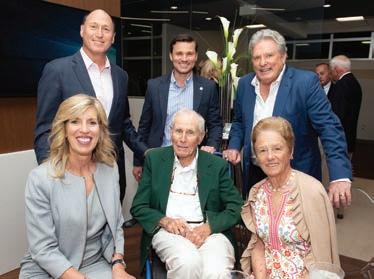


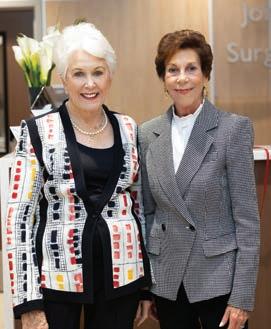





58 | PINNACLE | jupitermed.com
Anne Marie Pinard, Katherine Pinard
Michele Deverich and Craig Williamson
Jane Napier, Peggy Katz
Johnny and Terry Gray
Dr. Michael Leighton, Tim Donahue, Dr. Amit Rastogi, John Seifert, Jayne Donahue
Back row: Dr. Rogerio Lilenbaum, Peter Thate, Marty Dytrych; front row: Traci Simonsen, Peter and Missy Crisp
Anthony Mastroianni, Nicholas Mastroianni II, Audrey Mastroianni, Jessica and Nicholas Mastroianni III
Donna DeMaio Bijou and Paul Bijou
Dr. Shanel Bhagwandin, Dr. Julian Berrocal, Dr. Ryan Brown
Anthony Mastroianni, Nicholas Mastroianni III and Jessica Mastroianni, Nicholas Mastroianni II, Johnny and Terry Gray, Peggy Katz, Katherine Pinard, Anne Marie Pinard, Kathleen and George Damman, Joan Jorgenson
TRACEY BENSON PHOTOGRAPHY
LIGHTHOUSE LEGACY SOCIETY LUNCHEON
December 12, 2023
Old Marsh Golf Club, Palm Beach Gardens

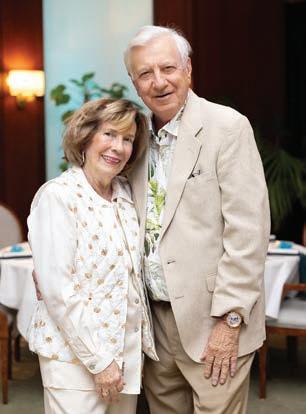


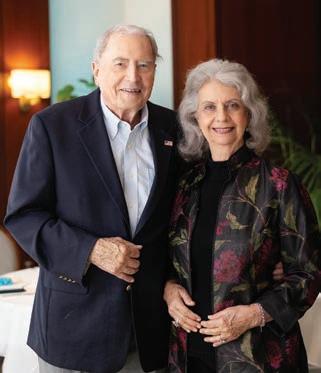
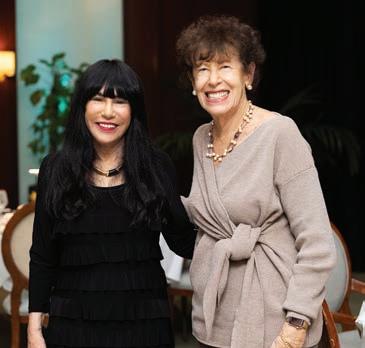
CHECK PRESENTATION
December 13, 2023

jupitermed.com | PINNACLE | 59
Frenchman’s Creek, Palm Beach Gardens
TRACEY BENSON PHOTOGRAPHY
COURTESY OF FRENCHMAN’S CREEK
Dr. Carole Hankin, Eileen Cummings
Robert and Carole Hartless
Louise and Jim Felcyn
Terri and Curt Francisco
Marie Zettel, Lynda Zettel
Traci Simonsen, Scott Pittenger
EVENT PHOTOS
THE LOXAHATCHEE CLUB FRIENDS OF JUPITER MEDICAL CENTER GOLF TOURNAMENT
January 11, 2024
The Loxahatchee Club, Jupiter
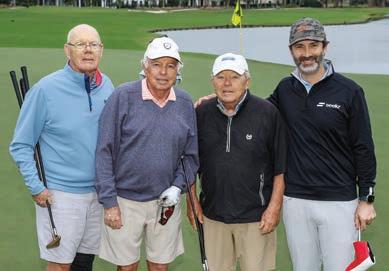






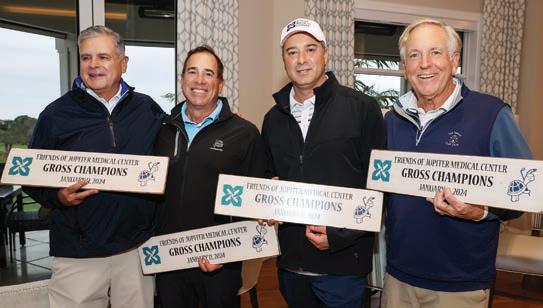


60 | PINNACLE | jupitermed.com
John DeJesus, Dr. Michael Leighton, Dr. John Randazzo, Chip O’Hare
Chip O’Hare, Peter Nance, Jeff Neubert
Dr. Amit Rastogi, Peter Lund, Dr. Lee Fox
Dr. Amir Lubarsky, Steve Eshelman, Peter Sandore, Michael Wilson
Dr. John Randazzo, John DeJesus, Dr. Michael Leighton, Chip O’Hare
John Waters, Fred Kappus, Dr. Lee Fox, Joe Jerkovich, John Connelly, Jon Hodges
Steve Green, Dr. Daniel Boss, Robert Capazzi, Bob Farrell
Jim McCormick, Jack Byrne, Joe Norberg, Dr. John Kowalczyk
Tom Pizzo, Peter Lund, Dominic Pileggi, Jerry Donnini
VISUAL ENTERPRISES
Joe Armbrust, John Connelly, Fred Kappus, Trevor McGill




NORTH PALM BEACH JUPITER WEST PALM BEACH 1400 Old Dixie Hwy. 225 E. Indiantown Rd. 1810 S. Dixie Hwy. 561.845.3250 561.748.5440 561.249.6000 JUPITER OPEN SUNDAYS 11:00AM-4:00PM @excentricities EXCENTRICITIES.COM
EVENT PHOTOS
LOST TREE CLUB COMMUNITY RECEPTION
January 17, 2024
Lost Tree Club, North Palm Beach





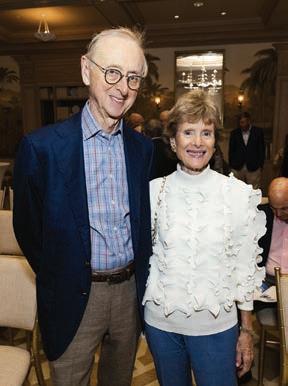

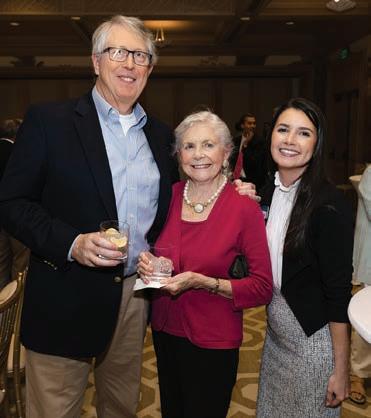

62 | PINNACLE | jupitermed.com
SONJU PHOTOGRAPHY
Bill and Mary Kerr
Paul and Penny Edison, Ashley Haughton
Nancy Kreitler, Alexandra Frazier, Cindy Gormley
Dave and Janet Bornhoeft, Peter Lund
Dick Loynd, Jennifer Amarnick, Rick Gibson
Joan Goodwin, Bonnie Markowski, Angie and Kemper Matt, Gene Markowski
Stephen and Jennifer Errico, Carroll and James Bennett
Dr. Michael Worley, Dr. Jon Du Bois, Dr. Amit Rastogi, Dr. Julian Berrocal
Dr. Jon Du Bois, Joan and Tom Litle
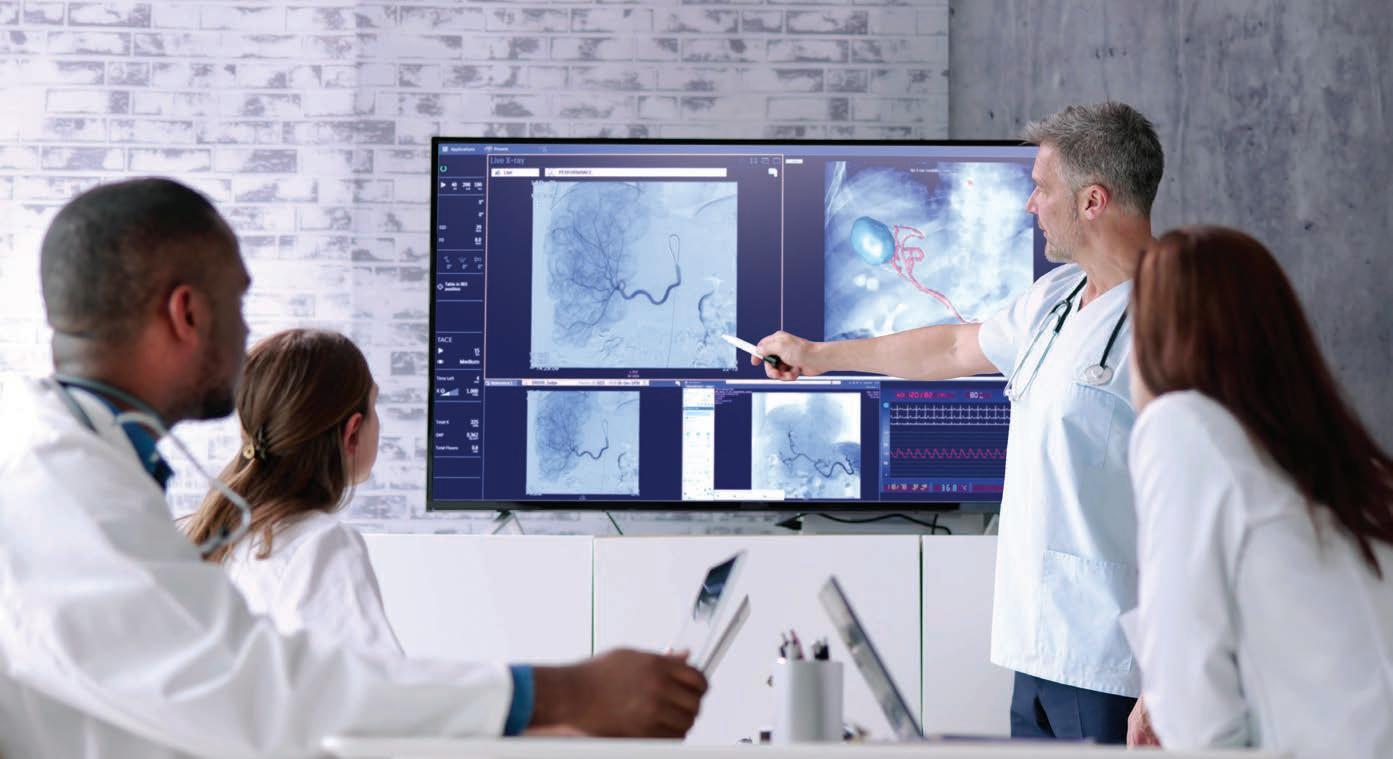
Our Physicians Are Transforming The Future of Health Care
At Jupiter Medical Center our distinguished team of physicians utilize the latest technology and innovative treatments to provide the highest level of quality, safety, and patient experience.
Our highly experienced professionals are setting the bar for care in the region and are the fundamental force behind our numerous recognitions and awards.
We are proud of their work, their passion, and their commitment to excellence. We thank each of them for their unwavering dedication to caring for our community, each and every day.
Meet our award-winning physicians at jupitermed.com

Sleep Like a Baby
Expert insight into how and why to swaddle a newborn
By Mary Murray

Jupiter Medical Center boasts a Safe Sleep Certification from the National Safe Sleep Program in recognition of its commitment to best practices and education regarding infant safe sleep. One important aspect of safe sleep is swaddling, or the wrapping of a newborn in a lightweight cloth up to his or her shoulders. Here, Pamela Canter, JMC’s vice president and chief nursing officer, shares four important things to know about swaddling.
1. The Basics
“Swaddling can help calm a baby,” says Canter. “It is thought that swaddling helps to re-create the restricted space of the womb, helping a baby to settle into sleep, stay asleep, and soothe themselves back to sleep if they awaken. Studies support that

swaddled babies wake less frequently and sleep longer than non-swaddled babies. There is limited evidence that wrapping babies correctly helps protect against sudden unexpected deaths in infancy. Always place your baby on their back—not their side or tummy—to sleep.”
2. Proper Technique
“Effective swaddling should be firm but not tight. It should allow your baby’s chest to rise normally while breathing. The wrap should not be too tight around the baby’s hips and legs either; the baby should be able to bend at their hips with their knees apart. Do not wrap your baby above their shoulders.”
3. What to Use
“It is important to use lightweight blankets to swaddle, such as those made from lightweight cotton or muslin. To prevent overheating, make sure your baby is not overdressed under the wrap. If the weather is warm, your baby may need only an undershirt or onesie. In cooler weather, your baby may need lightweight, footed, long-sleeve pajamas.”
4. How to Stop Swaddling
“Once their startle reflex is gone, it is fine to leave their arms out of the swaddle to allow them to self-soothe. You may want to consider moving them to a safe infant sleep bag at this point (around 3 months), especially if they are beginning to try to roll over. A safe infant sleep bag that is fitted to your baby’s size will provide the restricted-space feeling they are accustomed to and help them settle into sleep and stay asleep longer.” «
64 | PINNACLE | jupitermed.com
Pamela Canter





Excellence in Pediatric Specialty Care is Always Close By










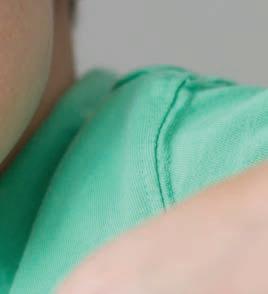

As part of our commitment to bring world-class, compassionate care to where the children are, Nicklaus Children’s has further expanded in Martin and Palm Beach counties. We provide specialty appointments, diagnostics and imaging services, rehabilitation and walk-in urgent care (services vary by location).

For locations near you please visit nicklauschildrens.org/locations







Nicklaus Children’s Hospital and Jupiter Medical Center are proud to partner to bring you the best in pediatric inpatient, neonatal intensive care services and pediatric emergency care in Palm Beach County. Locations in Boynton Beach, Palm Beach Gardens, Palm City and Wellington
TOP 21 PROPERTY SALES IN THE NORTHERN PALM BEACHES IN THE PAST 12 MONTHS
VINCE HAD THE MOST LISTINGS

561.847.5700
vmarotta@marottarealty.com
LOCAL LUXURY EXPERT VINCE MAROTTA
#1 PRODUCER FOR ILLUSTRATED PROPERTIES IN 2019, 2020, 2021, 2022, & 2023
VINCE MAROTTA
Data From MLS 2/28/2024































































 Dr. Michael Worley Jr.
Dr. Michael Worley Jr.




























































































































































